
- Great Books
Great Books
I. Treasures by Aleksandr Solzhenitsyn:
1. The Gulag Archipelago (1918-1956): An Experiment in Literary Investigation. 1973. This volume contains Parts I-II, The Prison Industry and Perpetual Motion. The first 660 pages of the English translation. Nonfiction. Harper & Row Publishers, New York, NY. Translated by Thomas P. Whitney.
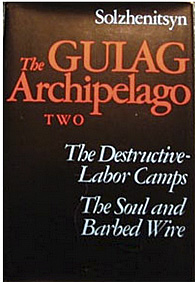
2. The Gulag Archipelago (1918-1956): An Experiment in Literary Investigation. 1975. This volume contains Parts III-IV, The Destructive Labor Camps and The Soul and Barbed Wire. The final 712 pages of the English translation. Nonfiction. Harper & Row Publishers, New York, NY. Translated by Thomas P. Whitney.
These volumes of The Gulag Archipelago are perhaps the best books, the most honest political testament, and the most poignant condemnation of a brutal political system that has ever been or that will ever be written. These are absolutely must-read volumes for anyone who prefers freedom over slavery.
3. The Oak and the Calf. 1980 edition. Franklin Library. Memoirs/Nonfiction, 550 pages. Translated by H.T. Willets. This memoir relates an incredible journey of a courageous man who would place his life and liberty on the line in the pursuit of freedom of publication in a totalitarian state. Another must-read volume from an indomitable, irrepressible man.
4. The First Circle. 1968. Historic novel. Translated by Thomas P. Whitney.
5. One Day In The Life of Ivan Denisovich. 1963. Fiction.
6. Cancer Ward. 1969. Historic novel.

7. August 1914. (The Red Wheel I) 1971. Historic novel. Translated by Michael Glenny.
8. November 1916 (The Red Wheel II). 1999. Historic novel. Translated by H.T. Willets. (This volume includes Solzhenitsyn’s famous “Lenin in Zurich” essay.)
The two volumes above, The Red Wheels I and II saga, show Solzhenitsyn as a magnificent writer of historic, epic, “fiction” novels. It was a shame to the literary world that the The Red Wheel III about the Russian Revolution (March 1917) and the overthrow of the Czar was translated from its Russian original into English until 2017. But the is finally bearing fruit. The third installment of The Red Wheel series, March 1917 that I have for many years eagerly waited for translation is here.
9. March 1917, the Red Wheel, Node III, Book 1. Published by the Center for Ethics and Culture, Solzhenitsyn Series, translated by Marian Schwartz , HC book, University of Notre Dame Press, October 15, 2017, 672 pages.
The Red Wheel, Node III deals with the momentous events of the February Revolution (which actually toppled Tsar Nicolas II and temporarily empowered the moderate revolutionaries led by Alexander Kerensky). The fall of the Kerensky government led to the tragic events that ushered in the October Revolution and the military coup by Lenin’s Bolsheviks— and to years of misery and the tyranny of communism in Russia.
“As the great Solzhenitsyn scholar Georges Nivat has written, Solzhenitsyn is the author of two great ‘literary cathedrals,’ The Gulag Archipelago and The Red Wheel. The first is the definitive exposé of ideological despotism and all of its murderous works. The Red Wheel is the definitive account of how the forces of revolutionary nihilism came to triumph in the first place. It is a sprawling and fascinating mix of philosophical and moral discernment, literary inventiveness, and historical insight that sometimes strains the novelistic form, but is also one of the great works of moral and political instruction of the twentieth century.” —Daniel J. Mahoney, co-editor of The Solzhenitsyn Reader: New and Essential Writings
10. I take poetic license in adding under this treasure trove, Michael Scammell’s authoritative biography titled Solzhenitsyn. 1984. Biography, nonfiction. This is an excellent biography.
11. Another excellent book is Daniel J. Mahoney’s The Other Solzhenitsyn: Telling the Truth about a Misunderstood Writer and Thinker, 2014. Read Dr. Faria’s review of this book.
II. Historic Novels by Gore Vidal:

1. Julian. 1981. Franklin Library edition. Historic novel. This is truly a magnificent and priceless leather edition with 22-karat gold embossing of cover and spine, gild edges on all page surfaces and raised spine. As such this tome is immensely fit to contain within its covers a historic novel of epic proportions. This is without a doubt absolutely one of the best books I have ever read and possess in my library. As far as the narrative, although categorized properly as a historic novel, this tome is for the most part an accurate portrayal of the life and times of Roman Emperor Julian II, surnamed “the Apostate” to some, “the Philosopher” to others. A nephew of Constantine the Great, Julian was raised a Christian, but as a philosophy student in Athens, he studied NeoPlatonism and was initiated in the secret rites of the Eleusinian Mysteries. Thus, in religious devotion, Julian gradually reverted to the ancient rites of paganism and rejected Christianity. Emperor Constantius II, needing a loyal general in the Western provinces, Julian was ordered by the Emperor to leave Athens, where he was studying, become a commander, field armies, and secure the frontier against barbarian invaders. Victorious, time and again, and devoted to his legions, Julian was proclaimed “Imperator” by his troops, and upon the death of his cousin, Constantius, he assumed the purple.
The portrayal of Julian by Vidal is that of a scholarly, serious and studious young man, later a very competent general, and finally a humane and conscientious ruler. As emperor, Julian tried to turn back the clock, debated with theologians, wrote treatises against Christianity, and attempted unsuccessfully to revert the Roman state to paganism. Most dramatic and mesmerizing, though, is Julian’s ill-fated invasion of the Sassanian (Persian) Empire against King Shapur II in A.D. 363, a trying and desperate campaign in which Julian lost his life under mysterious circumstances. Controversial is Gore Vidal’s thesis that Julian’s death was the result of a conspiracy involving his Christian generals, including the future Emperors Jovian and Valentinian I. This novel is recommended to history buffs, scholars of antiquity, as well as to writing initiates and even published authors, as an instructive literary masterpiece.
2. Burr. 1973. Franklin Library edition. Historic novel. This is the second best book by Gore Vidal. Although categorized as a historic novel it is for the most part an accurate portrayal of the life and times of Aaron Burr.
3. 1876. Historic novel. 1976. This is an absorbing novel with two of the most endearing characters in American fiction, Mr. Charlie Schuyler and his beautiful daughter, Emma. We learn a lot about newspaper editors, publishers, and politicians of the time in this novel. One must keep in mind while most of the episodes relating to historic persons and events are nonfiction, the main characters are not. Moreover, the politics of the time are viewed from the perspective and prism of a very politically liberal writer, who frequently assumes a very controversial persona, and at times Vidal cannot completely keep his politics from influencing the character and coloring the perception of the fascinating history he writes.
For example, Vidal views conservative, post-Reconstruction era, traditionalist America during this period through his liberal political prism, detecting only corruption and cynicism in American politics and ignoring her greatness. He fails to see a vibrant, expanding nation, the great American Republic that she has become, not only fulfilling the expansion of Manifest Destiny, but also setting ablaze a path for the pursuit of freedom, not only in America but also throughout the globe, even if for the rest of the world, freedom, for a century or longer, would remain only a cherished idea. Vidal’s 1876, nevertheless, is a highly entertaining and captivating read. As a literary piece, this historic novel with its enthralling, even lovable characters, fictional and otherwise, is highly recommended if considered with this friendly caveats.
4. Empire. 1987. Historic novel. This is another masterful, epic historic novel by Gore Vidal, taking place about the time the U.S. was becoming a prosperous nation and world power under William McKinley. In this tome, the descendants of Charlie Schuyler of 1876 continue the American saga of expansion and empire-building and the promotion of free-market capitalism, amidst the growth of influential periodicals, as well as tendentious, mass-produced “yellow journalism.” Some of main characters in this novel are historic and they come out vividly alive out of the pages of this novel. Rugged individualism, particularly cultivated in the West, goes hand in glove with American refinement in the East.
We meet and are delighted with the dialogue and actions of such historic figures as Presidents William McKinley and Theodore Roosevelt; William Jennings Bryan and William Randolph Hearst; the mysterious “Five Hearts”: John Hay and his wife, Henry Adams and his wife, and the strange and elusive geologist Clarence King; and then there is the novelist and intellectual, Henry James, the dear friend of the Five Hearts. Even the Astors and the Vanderbilts come into the picture. The final fictitious but heated, vocal, personal and political exchange between William Randolph Hearst, the inventor of “yellow journalism,” and Teddy Roosevelt, the maverick Republican President, is a memorable encounter and probably a fairly accurate representation of what may have transpired (in a conversation that actually took place), as reflected in the characters of two of men who dominated this exciting era.
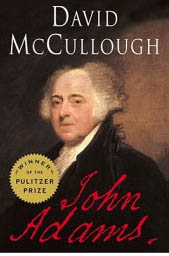
IV. Biographies:
1. The Life of Samuel Johnson including a Journal of His Tour to the Hebrides by James Boswell. 1835. 10-volumes. Probably the most sympathetic and complete biography ever published.
2. John Adams by David McCullough. 2001. This biography restored John Adams to the pedestal where he belonged as one of the giants of our Founding Fathers.
Biographies about Alexander Hamilton:
3. Alexander Hamilton, American by Richard Brookhiser. 1999. Falls short but is an introductory book for the initiate student.
4. Alexander Hamilton, A Life by Willard Sterne Randall. 2003. This book and Ron Chernow’s (which follows) are the two best biographies I have read on Alexander Hamilton in recent years and both are absolutely must read tomes.
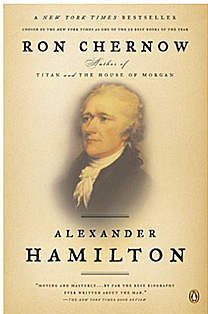
5. Alexander Hamilton by Ron Chernow. 2004. Hamilton (1755-1804) was born in the West Indies (Nevis), descended from a Laird of Scotland from his father’s side of the family and from French Huguenots on his mother’s side. Brought up in relative poverty, he was recognized a child prodigy while still a teenager by Hugh Knox, a Presbyterian minister in the islands. As an extremely proficient clerk at a Counting House in St. Croix, Hamilton’s employers also appreciated his precocity and intelligence. Knox arranged for young Hamilton, age 17, to receive financial assistance from the admiring islanders, who backed Hamilton to travel to America and study on scholarship. America was then a land in revolutionary turmoil, rebelling against British rule. As a student, Hamilton soon became embroiled in the heat of politics and revolution. These books tell the story with differing perspectives, flare, and scholarship.
I recommend all three of the books. Chernow’s book is the most comprehensive and scholarly, but it is less apt to draw conclusions. Although most of the protagonists, including the Founders themselves, are basically described as good, their personalities, nevertheless, come in shades of gray as to motives and personal foibles. Only George Washington and Eliza Schuyler Hamilton are depicted in pure white glowing terms. Burr is only a few shades darker than Hamilton, whose immense achievements as well as incredible misjudgments, are emphasized in this biography. (Read the complete review of Ron Chernow’s Alexander Hamilton.)
Randall’s book correctly exalts Hamilton and is written in engaging prose with novelistic flare. But Randall is apt to leave out material that is contentious, drawing conclusions when evidence points in a plausible direction. For example, for him the plausible love affair between Angelica Schuyler and Hamilton is a certainty. His book is still my favorite biography of Hamilton in terms of narrative and perspective. Chernow’s biography is best as far as material included and scope. Brookhiser’s book is the most elementary and frequently Brookhiser’s opinions interject themselves into the book, at times carrying the narrative. This last short book is for the initiate.
More Biographies:
6. Founding Father: Rediscovering George Washington by Richard Brookhiser. 1996.
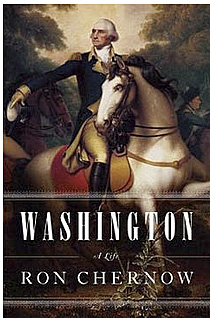
7. Washington, A Life by Ron Chernow. 2010. Chernow’s Washington is the much-needed, authoritative biography of America’s first president for the modern age. Washington is incarnated in flesh and blood, imbued with human characteristics, suffused with moral strengths and human weaknesses — reflected in such sobering issues as his unresolved moral dilemma about slavery, his consuming preoccupation with rank and propriety, and how he will be seen and judged by posterity. Washington is portrayed in his rarely seen human side, from sharing hardships with his soldiers during the Revolutionary War to his flirtatious eye for the ladies at social gatherings. In this biography Washington’s human characteristics that have been forgotten or neglected are revived; nevertheless in his human form, Washington’s place at the pinnacle of American history remains justly secure as the timeless hero of the American Republic! (See Dr. Miguel Faria’s review of this book on this website.)
8. James Madison, A Biography by Ralph Ketcham. 1990. A comprehensive and honest biography.
9. James Monroe by W.P. Cresson. (1946) Easton Press edition, 1986. This is a colorful, truthful, and well researched biography of a great Virginian who served his country for many years in faithful and diligent service. He seems to be only remembered today as the author of the Monroe Doctrine, but as President of the United States, Monroe presided over the prosperous years known as the Era of Good Feeling.
10. The Last Founding Father: James Monroe and a Nation’s Call to Greatness by Harlow Giles Unger. 2009. See Dr. Miguel Faria’s review of this book on this website.
11. Gentleman Revolutionary: Gouverneur Morris, the Rake Who Wrote the Constitution by Richard Brookhiser. 2003. A delightful biography that is long overdue about one of America’s least known Founding Fathers.
12. Envoy to the Terror: Gouverneur Morris and the French Revolution by Melanie Randolph Miller. 2006. Dramatic account of Gouverneur Morris’ American diplomacy during the French Revolution.
13. American Sphinx: The Character of Thomas Jefferson by Joseph Ellis. 1997.
14. Mr. Jefferson by Albert J. Nock. (1956) Reprinted in 1998.
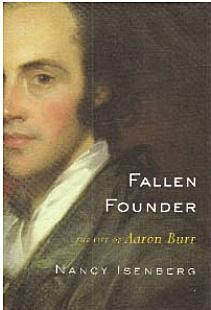
15. Aaron Burr: Conspiracy to Treason by Buckner F. Melton, Jr. 2002. Although a small tome of 278 pages, this is an engaging and mesmerizing biography from both historic and legal points of view. You will not be able to put this book down! The adventurer and intriguer within Burr jumps out at us from the pages of this book. Supreme Court Chief Justice John Marshall and his cousin, Thomas Jefferson, lock horns on federalism and treason. The eccentricities of John Randolph of Virginia, Supreme Court Justice Samuel P. Chase, and, the forgotten Founder, Luther Martin, all come alive with memorable words and deeds!
16. Fallen Founder: The Life of Aaron Burr by Nancy Isenberg. 2007. In this book, Ms. Isenberg, in a great leap of faith and with significant scholarship, attempts but fails to restore Burr’s historic reputation as an American revolutionary icon and Founding Father. She succeeds in revealing other aspects of Aaron Burr’s private life and personality that many of us suspected but could not quite pinpoint. Hamilton and the other American Founders had good reason to mistrust this man.
17. John Quincy Adams by Harlow Giles Unger. 2012. See Dr. Miguel Faria’s review of this book on this website.
18. Casey: The Lives and Secrets of William J. Casey, From the OSS to the CIA by Joseph E. Persico. 1990. This tome is an excellent biography of William J. Casey, President Ronald Reagan’s CIA Director (1981-1986) during one of the “hottest” periods of the Cold War. The life of Casey is a story against all odds, and to understand the story of this man who was so dedicated, the book must be read with the avidity it deserves. The son of Irish-Catholic immigrants, Casey was a man for all seasons, lawyer, author, capitalist, and director of secret intelligence during World War II (OSS), to “king-maker” in the Republican establishment, to finally Director of the CIA.
The cover of the book says, “Persico portrays a man at once complex and simple: a devout Catholic…an ideological warrior always at the ready with a crowbar or a legal brief; a deeply intelligent, yet oddly naive American patriot.” I mostly agree. This biography is highly recommended.
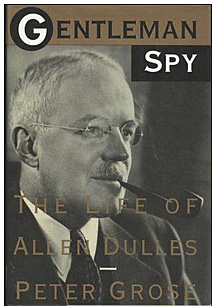
19. Gentleman Spy: The Life of Allen Dulles by Peter Grose. 1994. This is a fascinating biography of one of the founding members, most influential, as well as one of the longest serving CIA Directors in the agency’s history (1953-1961). Along with his brother, John Foster Dulles, who also served as Secretary of State under President Dwight D. Eisenhower, the Dulles brothers dominated the intelligence and foreign policy arenas in American politics. This biography is highly recommended.
20. Dossier: The Secret History of Armand Hammer by Edward Jay Epstein. 1996. What an incredible biography and spectacular journalistic and historical research! When I began to read this book, I wondered what I was doing reading a biography of a man I considered to be a despicable individual, fifteen years after publication. I had previously read two of Edward J. Epstein’s books and had been impressed. Those two books are also listed here.
Moreover, I had read reviews of this book at the time of publication and I remember the accolades even years later, so I immersed myself in this book, which turned out to be another spellbinding adventure that I could not put down. Epstein had uncovered information that Armand Hammer thought would remain deeply buried and unrecoverable. From his childhood until his death, every fact on this man’s life had been unearthed by the investigative journalism of this incredible author!
The avalanche of facts make intentions and motives crystal clear. This book must be read to be believed. While carefully building a sterling reputation that was central to his duplicitous life, posing as a capitalist, art connoisseur and philanthropist — Mr. Hammer was plainly not the American patriot he liked to portray himself as, posing in photographs with all American presidents, but a Soviet agent, the Kremlin’s man in America!
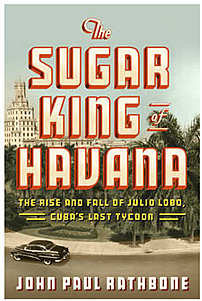
21. The Sugar King of Havana: The Rise and Fall of Julio Lobo, Cuba’s Last Tycoon by John Paul Rathbone. 2010. Besides those with an interest in Cuba, the tropical paradise, her turbulent history, the memories of Old Havana, etc., those with an interest in world economics in the early part of the 20th and 21st centuries, will find this a fascinating book.
This is an absolutely enchanting book, explaining Cuban history in terms of revolutionary politics and economics in terms of control of sugar world prices, from the turn of the 20th century just before and during the Cuban Revolution.
Sugar was sold then similarly as oil is today, as a world commodity, except that in sugar, Cuba and Julio Lobo, rather than OPEC and Chavez, were the biggest players, that is until Fidel and Raul Castro, Che Guevara, and communism basically destroyed the economy of the island. The rest is history.
22. Prince Rupert: The Last Cavalier by Charles Spencer. 2007. Charles Spencer — British author, journalist and former correspondent for NBC News, writer, broadcaster, and British peer 9th Earl Spencer and brother of the late Princess Diana, the former Princess of Wales — has written an incredible biography using superb historical research about a truly incredible man, Prince Rupert of the Rhine! As Spencer wrote in the Introduction: “It is hard to believe that one man packed so much into a single lifetime!” See Dr. Miguel Faria’s complete posted on this website.
23. Prince Eugene of Savoy by Derek McKay. 1977. A comprehensive biography of the great general who under the loyal banner of Austria and the Holy Roman Empire defended Christendom from the invading Ottoman Turks, pushing back the Islamic wave threatening Central Europe. Eugene of Savoy in some memorable battles, such as the Battle of Belgrade, routed the Ottoman forces and sent them back to the sultan in Istanbul in shame and dissolution. As if that was not enough, the legendary but serious and no-nonsense general, in alliance with the Duke of Marlborough, defeated the military machine of Louis XIV in the west, ending the golden years of power and glory of the Sun King of France. The biography is often like its subject, cut and dry, but always informative, and given the subject matter, engaging and edifying. Highly recommended for those interested in the life and times of the prince and the wars he fought.
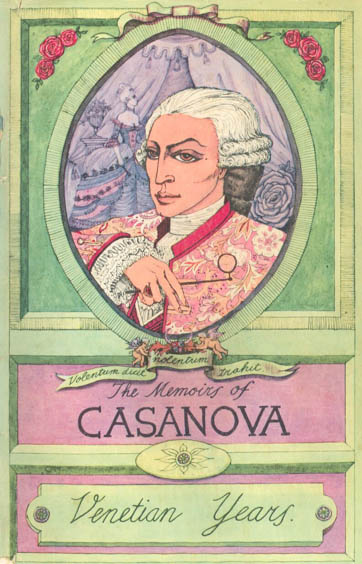
V. Memoirs:
1. The Memoirs of Jacques Casanova De Seingalt. The first complete and unabridged English translation by Arthur Machen in six volumes: Venetian Years; Paris and Prison; The Eternal Quest; Adventures in the South; In London and Moscow; Spanish Passions. In my opinion, these are the best memoirs ever published. Reading these six volumes is not only like stepping into this man’s shoes and becoming the great lover, Jacques Casanova, but actually experiencing life, conversations, adventures, and intrigues in the marvelous 18th century in the great European cities of Italy, Spain, France, England, Holland, and even Germany and Russia!
Imagine saving the life of an eminent Venetian senator, a nobleman, and becoming his adopted son! Imagine meeting the Pope and receiving a papal dispensation so he could eat meat on Fridays! Imagine meeting world figures such as Madame de Pompadour, Voltaire, Frederick the Great, Catherine the Great; and becoming friends with the great ministers of Louis XV, as well as such notable charlatans as Cagliostro and Saint Germain! And of course, don’t forget becoming the greatest lover of the 18th century and seducing high ranking noble women as well as rescuing the lowliest damsels in distress — and loving each and every one of them!
Besides all of this, the memoirs are incredibly and beautifully written as if Casanova was speaking to us today. I have read no better portrayal of an entire era as contained in these enchanting, six volumes. The only despair is when the book ends and we read the publishers details of the author’s final days. What a life!

2. Casanova’s Women: The Great Seducer and the Women He Loved (2006) by Judith Summers. Bloomsbury, U.S.A. This tome is Illustrated, annotated with Notes and Bibliography, has a brief chronology, and contains 365 pages. This is an excellent “sequel” to Casanova’s Memoirs. Casanova protected the identity of most of the women in his life, especially aristocratic dames or well-known figures, and this book deciphers their identities. Judith Summers sets out to find out who they were and succeeds admirably in tracing their lives, they identities and what became of them. The book also corroborates the fact that Casanova’s life of seduction was no fantasy but a truthful account, and many of the women remained his friends and continued to correspond with him throughout his life. Judith Summers also clarifies certain controversial or obscure passages from his Memoirs and her portrait of Casanova reaffirms his literary talents as a writer, his generosity as a man, as well as his darker side in seduction, deceit, and his “free-thinking” amorality that also characterized the lives of libertines during that age.
3. Casanova: Actor, Lover, Priest, Spy (2008) by Ian Kelly. Jeremy P. Tarcher/Penguin. New York USA., illustrated, indexed, annotated with Notes and Bibliography, 403 pages. This book is a great addition to the life and times of Casanova, particularly by filling in the details of Casanova’s life in his older years particularly after the year 1774 when Casanova’s Memoirs abruptly end. For that alone it is recommended. Unfortunately Ian Kelly chooses to relate essentially the same incidents in the early life of Casanova as Judith Summers had already done in her excellent book two years earlier. Frequently he quotes exactly the same passages. He is also more judgmental, opines when no opinion is needed, at times obscures rather than elucidates (for example in discussing MM’s identity, which Summers had already provided evidence she was a member of the powerful Morosini family, etc.). He also tries to make much of a couple of Casanova’s homoerotic dalliances, which is consistent with Casanova’s amoral side rather than any streak of bisexuality, etc. I would recommend Casanova’s Memoirs, followed by Judith Summers’ Casanova’s Women — The Great Seducer and the Women He Loved (2006), and lastly this tome for the life of Casanova in his later years.
4. The Confessions of Jean-Jacques Rousseau. The anonymous translation into English of 1783 and 1790 revised and completed by A.S.B. Glover. Heritage Press edition, 1956. Let us just say that Rousseau cries rivers of tears in recounting details of his life. We laugh and wonder how this man became the influential person he was, and how such giants of the times, including Robespierre and Napoleon, were fascinated by the details of this man’s life and his works!
5. The Confessions of St. Augustine. 1963. Heritage Press edition. This is a very personal and deeply spiritual work of a saintly man speaking to God. We do learn that St. Augustine did, in fact, write: “[Lord,] Grant me chastity and continency, but not yet!” We must remember that this book was written not only in a religious context, but also in the 4th century just before the sun set on the Western Roman Empire. I do believe that St. Augustine’s City of God from a historical perspective is even a greater work by this giant of Christian theology.
VI. Non-Fiction:

A. Espionage and Cold War:
1. KGB : The Inside Story, Of Its Foreign Operations from Lenin to Gorbachev by Christopher Andrew and Oleg Gordievsky. 1990. An incredibly well-written and enthralling volume on the history of Russian and Soviet espionage and intelligence services. From the Okrana to the KGB, the stories of agents, double agents, betrayals, is superbly told by the first hand experience of one of the greatest heroes of the Cold War, Oleg Gordievsky in collaboration with perhaps the greatest scholar of Cold War secret intelligence, Cambridge professor Christopher Andrew. This tome is a very readable volume that will enchant the reader from beginning to end.
2. The Sword and the Shield: The Mitrokhin Archives and the Secret History of the KGB by Christopher Andrew and Vasili Mitrokhin. 1999. This is a treasure trove of Russian KGB intelligence secrets that came to us thanks to the courage and determination of KGB officer, Vasili Mitrokhin, who defected to the West in 1992. Mitrokhin and his family were exfiltrated from Russia by the British Secret Intelligence Service (SIS). The defector brought with him six cases containing the voluminous secret notes that he had copied from the top secret KGB files on a daily basis for twelve years, from 1972-1984! These files went as far back as 1918 and contained all of the information available to the KGB’s First Chief Directorate up until Mitrokhin’s retirement in 1984. As a result of Mitrokhin’s defection with his trove of secret files, hundreds of Soviet agents, Russian spies, and American traitors have been uncovered, and many have been brought to justice. These files are still being studied by scholars as well as Western intelligence services. This volume contains an enormous amount of material, code names, intelligence files, and probably will be savored only by the true espionage, Sovietologists, and Cold War aficionados.
3. The World Was Going Our Way: The KGB and the Battle For the Third World (Newly Revised Secrets from The Mitrokhin Archives) by Christopher Andrew and Vasili Mitrokhin. 2005. What a magnificent volume further revealing Russian Cold War secrets. Once again, the collaboration of Christopher Andrew and Vasili Mitrokhin result in an explosive combination detailing Soviet espionage and the CIA-KGB wars in the Third World. Yes, the world might have been going the way of the Soviets in the intelligence wars, particularly in the Third World, and the KGB was as astounded as we were with the sudden collapse of the Soviet Union — but the truth was that Russian collectivism was rotten to the core and not even the almost omnipotent KGB could prevent the collapse of Soviet communism. This tome is much more reader friendly than their previous volume, The Sword and The Shield, and should have a wider audience. This volume is highly recommended not only espionage fans, but also to modern historians and scholars of Third World foreign policy and international studies.
4. KGB: The Secret Work of the Soviet Secret Agents by John Barron, Reader’s Digest Press, New York, NY, 1974. This is a seminal book and monumental work on the history, the (then) current methods, organization, goals, of Soviet espionage — i.e., KGB foreign intelligence with its First Chief Directorate — and internal security operations — i.e., the Second Chief Directorate.
The author, John D. Barron (1930-2005), was an American investigative journalist, a brilliant Reader’s Digest writer and editor, and one of the foremost scholars of Soviet espionage during the Cold War.
This book detailed and exposed all the KGB officers posted across the world who were then known to the Western security services and dealt a crushing blow to KGB operations throughout the world! It is 462 pages, including 14 chapters, four major appendices, chapter notes, full bibliography, and an excellent index. It is fully illustrated with 16 pages of photos revealing the faces of many of the main protagonists and antagonists, as well as operational methods. This book is not only a historic classic of espionage during the Cold War, but an informative thriller. I recommend it to historians, as well as Cold War and espionage aficionados, and assign it 5 stars without reservation — and this is almost forty years after its publication! An absolutely outstanding nonfiction classic! See Dr. Miguel Faria’s complete book review posted on this website.

5. Special Tasks: The Memoirs of an Unwanted Witness — A Soviet Spymaster by Pavel Sudoplatov and Anatoli Sudoplatov with Jerrold L. and Leona P. Schecter. 1994. In the Foreword to this book, the historian Robert Conquest writes: “This is the most sensational, the most devastating, and in many ways the most informative autobiography ever to emerge from the Stalinist milieu. It is perhaps the most important single contribution to our knowledge since Khrushchev’s Secret Speech….The range of Sudoplatov’s activities….is remarkable.” I agree!
Moreover, I believe we should let Sudoplatov give us a summary from his own Prologue: “My name if Pavel Anatolievich Sudoplatov, but I do not expect you to recognize it, because for fifty-eight years it was one of the best-kept secrets in the Soviet Union….I was responsible for Trotsky’s assassination and, during World War II, I was in charge of guerrilla warfare and disinformation in Germany and German-occupied territories. After the war I continued to run illegal networks abroad whose purpose was to sabotage American and NATO installations in the event hostilities broke out. I was also in charge of the Soviet espionage effort to obtain the secrets of the atomic bomb from America and Great Britain. I set up a network of illegals who convinced Robert Oppenheimer, Enrico Fermi, Leo Szilard, Bruno Pontecorvo, Alan Nunn May, Klaus Fuchs, and other scientists in American and Great Britain to share atomic secrets with us. It is strange to look back fifty years and re-create the mentality that led us to take vengeance on our enemies with cold self-assurance…”
This is an incredible memoir, but I have placed it under the heading of Espionage and Cold War for the obvious nature of the astoundingly secret, explosive, and sensitive revelations of the main author. Sudoplatov was in charge of “Special Tasks,” a euphemism for the department of “wet affairs” (assassinations) and other state top secrets of the USSR under Lavrenti Beria and Joseph Stalin.

6. Stalin, Breaker of Nations by Robert Conquest (1991) covers the life of Joseph Stalin, from his childhood in Gori to his death at his Nearer dacha (Kuntsevo) near Moscow on March 5, 1953. This book is 346 pages, including bibliographical notes and index. The book is easy to read, well-organized, and ideal for the beginning student of Soviet history and Stalinism. It contains two sets of photographs that put faces on the victims of Stalin, adding tangible personification to the almost surreal sense of totalitarian horror, i.e., socialist terror incarnate!
Through the sequential Congresses of the Party, we can follow Stalin’s career as he ascends the levels of power with words and deeds, until he reaches the zenith of despotic, autocratic, and absolute power, and then the Congresses cease convening. Stalin rules with his inner circle, his minions who cajoled but also feared him.
Stalin even admitted to his Cheka Chief, Feliks Dzerzhinsky, and Politburo member, Lev Kamenev, “To choose one’s victims, to prepare one’s plans minutely, to slake an implacable vengeance, and then go to bed…there is nothing sweeter in the world.”
Stalin was able to do this repeatedly and with tremendous precision, through to his anti-semitic campaign against alleged “Cosmopolitanism,” and the Doctors’ Plot Affair two decades later up to the eve of his death in 1953. This book tells you all about it. See Dr. Miguel Faria’s complete book reviewposted on this website.
7. Stalin: Triumph and Tragedy by Dmitri Volkogonov. 1988. As “the first glasnost biography” of dictator Joseph Stalin, author Dmitri Volkogonov, General of the Soviet Army and head of the Institute of MIlitary History, writes “My book is called Triumph and Tragedy to suggest how the triumph of one man became the tragedy for a whole people.” See Dr. Miguel Faria’s complete book review posted on this website.
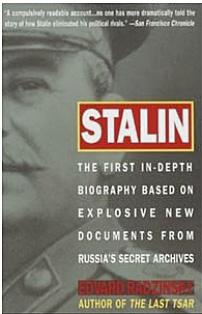
8. Stalin: The First In-Depth Biography Based on Explosive New Documents From Russia’s Secret Archives by Edvard Radzinsky. 1997. An authoritative, engaging, thrilling, and edifying biography of the Red Czar of the Soviet Union, the tyrant Joseph Stalin. See Dr. Miguel Faria’s complete book review posted on this website.
9. Stalin: The Court of the Red Tsar by Simon Sebag Monefiore. 2003. With stunning attention to detail, Montefiore provides us with a galvanizing portrait of a Stalin “as human and complicated as he is brutal” and chronicles the lives of those notorious henchmen who entered the court of the Red Tsar.
Among the many atrocious incidents cited in this book, there is one that stands out and that is the Katyn Forest massacre, how Stalin dealt with the order and his henchmen to hush up the atrocity, and more graphically, how it was done by the NKVD secret police so as to blame the Germans and wipe out the future intellectual elite of the Polish nation. By eliminating the officers (and reserve officers), who in their civilian functions were mostly professionals — the elite members of Polish society — the Soviets would decapitate the Poles of their leaders and easily subdue them.
As to how the shooting was actually done, a Soviet NKVD officer, Vasili Mikhailovich Blokhin, describes how he went down to the Ostachkov Camp where he and two other fellow officers “outfitted a hut with padded, soundproof walls and decided on a Stakhanovite quota of 250 shootings a night.” In this fashion, he and his fellow Chekists executed 7,000 Polish officers “in precisely 28 nights using a German Walther pistol to prevent future exposure.” Of the 22,000 Polish officers executed, 4,500 were interred in the Katyn Forest.

10. Young Stalin by Simon Sebag Montefiore. 2007. A well-researched, well-written, absorbing, and authoritative biography of Joseph Stalin’s early years. Montefiore used archival material which had lain forgotten in dusty storage for years, interviewed eyewitnesses or their descendants, and perhaps most importantly, he uncovered and published material from a number of previously unpublished memoirs (for the first time made available for his book). This includes material from Stalin’s girlfriends, terrorist comrades and revolutionary rivals, who knew him well; many of them later turned against him and perished. See Dr. Miguel Faria’s complete book review posted on this website.
11. Stalin’s Secret Agents: The Subversion of Roosevelt’s Government by M. Stanton Evans and Herbert Romerstein. 2012. See Dr. Miguel Faria’s complete book review posted on this website.
12. Deception: The Invisible War Between the KGB and the CIA by Edward Jay Epstein. 1989. See Dr. Miguel Faria’s review of this book on this website.
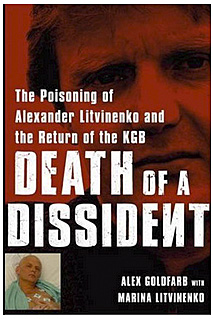
13. Death of a Dissident: The Poisoning of Alexander Litvinenko and the Return of the KGB by Alex Goldfarb with Marina Litvinenko. 2007. “The assassination of former Russian intelligence officer Alexander ‘Sasha’ Litvinenko in November 2006 — poisoned by the rare radioactive element polonium— caused an international sensation. Within a few short weeks, the fit 43-year-old lay gaunt, bald, and dying in a hospital, the victim of a ‘tiny nuclear bomb.’ Suspicions swirled around Russia’s FSB, the successor to the KGB, and the Putin regime. Traces of polonium radiation were found in Germany and on certain airplanes, suggesting a travel route from Russia for the carriers of the fatal poison. But what really happened? What did Litvinenko know? And why was he killed?….His closest friend, Alex Goldfarb, and his widow, Marina, are the only two people who can tell it all, from firsthand knowledge, with dramatic scenes from Moscow to London to Washington. Death of a Dissident reads like a political thriller, yet its story is more fantastic and frightening than any novel.”
14. Comrade J: The Untold Secrets of Russia’s Master Spy in America After the End of the Cold War by Pete Earley. 2007. “In 1991, the Soviet Union collapsed, the Cold War ended, and a new world order began. We thought everything had changed. But one thing never changed: the spies. Spymaster, defector, and double agent — the remarkable true story of Sergei Tretyakov who ran Russia’s post-Cold War spy program in America….Many spies have told their stories. None of them has the astonishing immediacy, relevance, and cautionary warnings as Comrade J.”
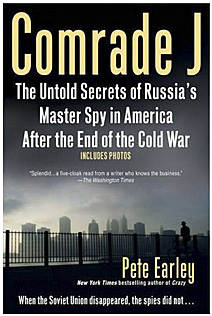
After World War II, it took the valiant efforts of the Russian defector, code clerk Igor Gozenko, to awaken America and her allies to the fact that Uncle Joe, the greatest mass murderer in history, and our Russian communist friends were conducting serious, devastating espionage against the United States (e.g., atomic secrets among others) at the same time that we were providing the Soviets with vital economic and military aid during “The Great Patriotic War” against the Nazis.
The Berlin Wall comes crashing down in 1989 and the Soviet Union collapses in 1991. Again, the Russians were said to be our friends and allies in the war against (Islamic) terrorism. Even a professor wrote enthusiastically that we had reached the end of history, so humanity has to become reconciled to live peacefully under a soft blend of global socialism and capitalism. Now enters Russian master spy defector Sergei Tretyakov of the New York Rezidentura of the SVR ( the former First Chief Directorate of the KGB) to rain on this optimistically dystopic parade.
And Tretyakov is no ordinary spy of the Communist era. He is the first KGB/SVR officer, who was actively spying for the new Russia after the collapse of the Soviet Union, to defect to the USA. According to a senior FBI agent involved in the case, Sergei Tretyakov “has been by far the most important Russian Spy that our side has had in decades…I can tell you this man saved American lives.” See Dr. Miguel Faria’s complete posted on this website.
15. Operation Solo: The FBI’s Man in the Kremlin by John Barron. 1996. This is the story of three heroes of the Cold War that very few Americans know about, a great cliffhanger, suspense-thriller — and it is all true!
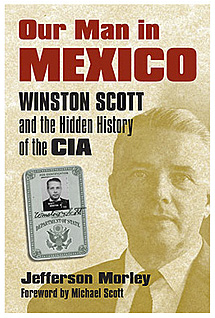
16. Our Man in Mexico: Winston Scott and the Hidden History of the CIA by Jefferson Morley. Foreword by Michael Scott. 2008. This is another suspenseful story of an unsung American hero operating quietly and effectively in our own backyard.
17. Traitors Among Us: Inside the Spy Catcher’s World by Stuart A. Herrington. 1999. This book is a collection of stories about military traitors who sold their country’s secrets to the Soviets for cold cash. Here is an excerpt from an Amazon.com review written by Mr. Wilburn Rowell:
“Herrington does a good job of telling of the military espionage by US servicemen who betrayed their country: the terrible damage that can occur because of it, the inherent difficulties in investigation, building a case for the prosecution, and the consequences for those who choose to sell out their country for money….”
I fully agree with this assessment! The reviewer’s final words are particularly poignant:
“As a former serviceman stationed in Germany during the 1970s, I am appalled at the betrayal of our country by these sellouts. The terrible horror that communism unleashed upon the world and we in the West fought so valiantly against cannot be dismissed by some Marxist professor or journalist saying ‘McCarthyism’. An estimated 100 million people were killed because of Communism (Black Book of Communism), and many of them were Americans.”
I also applaud Mr. Rowell for this informative review and thank him for his service to this country and the cause of freedom in the world! Dr. Miguel A. Faria
18. The Spy Who Saved the World: How a Soviet Colonel Changed the Course of the Cold War by Jerrold L. Schecter and Peter S. Deriabin. 1992. This is the story of Soviet GRU Colonel Oleg Penkovsky, who gave his life in the service of the British and American intelligence — and in the cause of freedom during the Cold War.
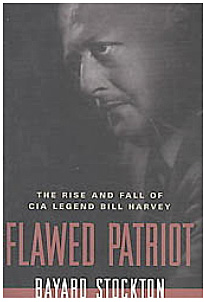
19. Flawed Patriot: The Rise and Fall of CIA Legend Bill Harvey by Bayard Stockton. 2006. Bill Harvey was our American James Bond, but unfortunately his life was complex and his fate tragic in the service of his country. A well-written and researched biography of a lesser known American hero.
20. The Spy Who Got Away: The Inside Story of Edward Lee Howard, the CIA Agent Who Betrayed His Country’s Secrets and Escaped to Moscow by David Wise. 1988. Well-written and fascinating biography of a traitor.
21. Ruse: Undercover with FBI Counterintelligence by Robert Eringer. 2007. This book is a hell of a suspenseful ride! A good patriotic hustler who risks his life for country and justice, Eringer goes after traitor Edward Lee Howard in post-communist Russia; assists in the capture of notorious killer Ira Einhorn in France; hoodwinks die-hard communist KGB Chairman Vladimir Kryuchkov in Moscow; and plays the Great Game skillfully with Cuban Intelligence in Washington and Havana. Kudos for Mr. Eringer’s book, an excellent sequel and denoument for David Wise’s The Spy Who Got Away (1988)! Highly recommended for those who, like me, prefer Cold War non-fiction, real life spy thrillers to fiction, cloak and dagger potboilers!
22. Confessions of a Spy: The Real Story of Aldrich Ames by Pete Earley. 1997.
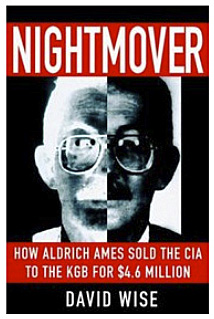
23. Nightmover: How Aldrich Ames Sold the CIA to the KGB for $4.6 Million by David Wise. 1995.
24. Spy: The Inside Story of How the FBI’s Robert Hanssen Betrayed America by David Wise. 2002.
25. The Spy Next Door: The Extraordinary Secret Life of Robert Philip Hanssen, the Most Damaging FBI Agent in U.S. History by Elaine Shannon and Ann Blackman. 2002.
26. The Main Enemy: The Inside Story of the CIA’s Final Showdown with the KGB by Milt Bearden and James Risen. 2003. An interesting account of the CIA-KGB war during the 1980s and 1990s.
27. Deadly Illusions: The KGB Orlov Dossier Reveals Stalin’s Master Spy by John Costello and Oleg Tsarev. 1993.
28. Alexander Orlov: The FBI’s KGB General by Edward Gazur. 2001. See Dr. Miguel Faria’s complete book review posted on this website.
29. Spies: The Rise and Fall of the KGB in America by John Earl Haynes, Harvey Klehr, and Alexander Vassiliev. 2009. This is a must have, comprehensive reference source for scholars of the Cold War, espionage, and the KGB — as well as spy buffs.
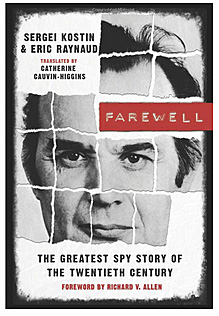
30. Farewell: The Greatest Spy Story of the Twentieth Century by Sergei Kostin and Eric Raynaud. Translated by Catherine Cauvin-Higgins. 2011. The disintegration of the USSR is inextricably entwined and intimately related to the life and times, failures and accomplishments, paradoxes and contradictions of the courageous Russian….Code name: Farewell. See Dr. Miguel Faria’s complete book review posted on this website.
31. Tiger Trap: America’s Secret Spy War with China by David Wise. 2011. An astounding and critically needed book as Americans know very little about the espionage activities of China in the United States. See Dr. Miguel Faria’s complete book review posted on this website.
32. The Widow Spy by Martha D. Peterson. 2012. A real-life thriller that begins when a seemingly typical American housewife, in an unusual gesture, invites her two teenage children out to lunch. This is twenty years after the main events subsequently depicted in the book. Subtitled “My CIA Journey from the Jungles of Laos to Prison in Moscow,” readers can only imagine her children’s reaction — “Mom is a spy”! From courageous widow to avenging spy, Peterson’s recollections take us on an emotional rollercoaster ride and provide a most engaging book. See Dr. Miguel Faria’s complete book review posted on this website.
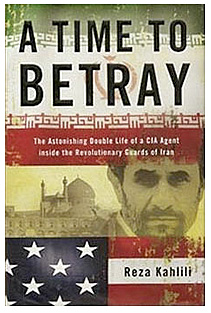
33. A Time to Betray: The Astonishing Double Life of a CIA Agent Inside the Revolutionary Guards of Iran by Reza Kahlili. 2010. One of the most heartrending, and at the same time, enthralling accounts of courage, dissimulation, and personal suffering in the genre of espionage memoirs. This is the story of a courageous man (Kahlili), who justly betrays and risks his life (and that of his family) to fight surreptitiously against the cruelties and injustices of the ruling government of his native country — Iran. See Dr. Miguel Faria’s complete book review posted on this website.
34. Warrior: Frank Sturgis: The CIA’s #1 Assassin-Spy, Who Nearly Killed Castro But Was Ambushed by Watergate by Jim Hunt and Bob Risch. 2011. The incredible real life adventures of Frank Sturgis is recounted in this riveting book, which reads like a novel, but it is incredibly all true! The tome is a biographical tribute of a nephew (Jim Hunt) to his uncle, a real-life American hero, who gave everything for his country — the comfort and niceties of his home and family life, the profits and security of his businesses, and ultimately his life. See Dr. Miguel Faria’s complete book review posted on this website.
35. The Long March: The Untold Story (1985) by Harrison E. Salisbury. The author of The Long March, Harrison E. Salisbury (1908-1993), was an American journalist and an eloquent writer, but he had a romantic, softspot for young, “idealistic” communist revolutionaries. This infatuation persisted even though these revolutionists ultimately showed their true colors when they attained supreme power, discarded their sense of justice, imposed communism and totalitarianism, and used terror to rule the police they had created. The Long March has been mythologized and effectively been used for communist propaganda by the Chinese leadership, facilitated, of course, by the avid support provided by their allies in Western academia, the last bastion of Marxism. But returning to the “heroic” March, the reader is invited to read Dr. Miguel Faria’s book review posted in this website. This book did not fulfilled my expectations, particularly after having read Salisbury’s true masterpiece, Black Night, White Snow, where his admiration at least is balanced with historical veracity. A more realistic portrayal of what really happened during the Long March, and the real legacy of totalitarian savagery it bequeathed to China, the book that follow is more recent, much more authoritative and accurate, and as eloquently written.
36. Mao: The Unknown Story (2005) by Jung Chang and Jon Halliday. This superb, comprehensive and authoritative biography of Mao Tse-tung (1893-1976) as well as a history of China in the 20th century has a very appropriate subtitle — “The Unknown Story” — because much of the information here is not well known and is not found in other books on Mao or China. As such, the authors, Jung Chang and Jon Halliday should be commended for their herculean task, vivid narration, and encyclopedic scholarship.
Among the many revelations, Mao: The Unknown Story depicts and documents Chairman Mao as the brutal monster he really was; how Mao desolated his own country and exterminated his own people — i.e., party cadres and impoverished peasants alike, even whole Red Army regiments. Mao committed in blind rage whatever crimes were necessary to attain and preserve supreme political power. “Democracy,” “justice,” “equality,” ” fraternity,” “freedom” were just words to be used for propaganda purposes, not ideals to be pursued by Chinese communists! See the full review.
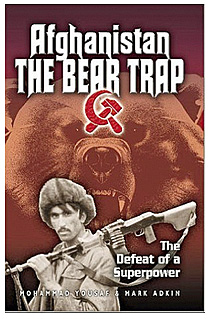
37. Afghanistan: The Bear Trap, The Defeat of a Superpower by Mohammad Yousef and Mark Adkins. 1992. This book relates in splendid prose the war of the Mujahideen against the Soviet occupiers and their communist allies in Afghanistan during the 1980s, and thus ushers in the Soviet defeat in that unhappy country and presages the disintegration of the Soviet Empire. Rather than describe this book further, I will mention its authors. Brigadier Mohammad Yousef (1937- ), was the head of the Afghan Bureau from 1983 to 1987. This was the secret agency directed by the Pakistani military and the Inter-Service Intelligence (ISI) responsible for the training and operational planning of the Mujahideen forces against the Soviets in both Afghanistan and later inside the Soviet Union. Major Mark Adkins served in the British Army and participated in the U.S. invasion of Grenada in 1983. This book is highly recommended for this little-known chapter of the cold war.
38. Disinformation: Former Spy Chief Reveals Secret Strategies for Undermining Freedom, Attacking Religion, and Promoting Terrorism by Lieutenant General Ion Mihai Pacepa and Professor Ronald J. Rychlak. 2013. A magnificent book with an enthralling narrative and revealing exposé and treatise on the use of propaganda and disinformation in contemporary international relations and national politics. See Dr. Miguel Faria’s review of this book on this website.
39. The Billion Dollar Spy: A True Story of Cold War Espionage and Betrayal by David E. Hoffman. 2015. The story of Adolf Tolkachev, an engineer in a high level, Soviet military installation. Tolkachev began spying for the CIA in 1978, and became one of the most valuable spies to work for the United States during the Cold War. The book is fully illustrated and annotated.
40. Left of Boom: How a Young CIA Case Officer Penetrated the Taliban and Al-Qaeda by Douglas Laux and Ralph Pezzullo (2017). A young CIA officer infiltrated the Taliban and Al-Qaeda in Afghanistan.
41. A Spy Among Friends: Kim Philby and the Great Betrayal by Ben Macintyre (2014). Heart-pounding suspense and an absorbing tale of deceit, duplicity, treason, and betrayal by Kim Philby, the greatest traitor in history, taken from personal papers and never-before-seen British intelligence files.
42. The Spy and the Traitor: The Greatest Espionage Story of the Cold War by Ben Macintyre (2018). The story of Oleg Gordievsky, senior KGB officer who spied for British MI6, and the daring escape plan to smuggle him out of Soviet Russia. Gordievsky remains the only Western agent to escape while under KGB surveillance in Moscow. Even noted author John Le Carré calls this book, “The best true spy story I have ever read.”
43. The Man Who Would Be King: The First American in Afghanistan by Ben Macintyre (2004). The incredible and true story of an American, Josiah Harlan, who travelled to Afghanistan in the 19th century and became a potentate and chieftain after amazing, daring adventures and much political intrigue. Eventually he returned to America, told his tales, became a celebrity for a time, and inspired Rudyard Kipling’s classic novella, which was made into a successful 1975 movie starring Sean Connery, Michael Caine and Christopher Plummer.
B. World War II:
1. Churchill’s Deception: The Dark Secret That Destroyed Nazi Germany by Louis C. Kilzer. 1994. See Dr. Miguel Faria’s review of this book on this website.
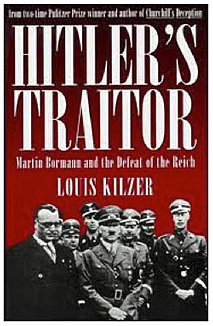
2. Hitler’s Traitor: Martin Bormann and the Defeat of the Reich by Louis C. Kilzer. 2000. See Dr. Miguel Faria’s review of this book on this website.
3. Walter Schellenberg: The Memoirs of Hitler’s Spymaster by Louis Hagan. 2006. A fascinating memoir of the head of Hitler’s SS counterintelligence service, foreign intelligence service, and eventually head of the military intelligence service, the Abwehr. This is the book quoted by many authors on the Nazi hierarchy and German secret service under Hitler because of Schellenberg’s honesty, reliability, and wit. According to historian Alan Bullock, “Schellenberg is the most valuable historical witness in the Third Reich.”
4. Heinrich Himmler: The Sinister Life of the Head of the SS and Gestapo by Roger Manvell and Heinrich Fraenkel. 2007. A very thorough and well-researched biography of Hitler’s head of the SS and Gestapo. The book is illustrated with rare photos and Manvell and Fraenkel have written an excellent narrative. In addition to this book, the two authors have also written comprehensive biographies of other Nazi leaders.
C. Political Science Classics:
1. The Law by Frederic Bastiat. 1850. Frederic Bastiat (1801-1850) was a French patriot as well as an economist, politician, statesman, and writer. As a deputy to the French legislative assembly just before and immediately the revolution of 1848, Bastiat opposed socialism espoused by Louis Blanc and other collectivists in the assembly. Unfortunately, Bastiat died from tuberculosis shortly before the publication of this little masterpiece! Some of his famous quotes are: “Socialism is legal plunder under or justified by false philanthropy”; “Law is force therefore it should be a negative concept”; “Legal plunder is organized injustice”; “The law commits legal plunder by violating liberty and property”; “Socialism is philanthropic tyranny.”
2. Destructive Generation: Second Thoughts About the ’60s by Peter Collier and David Horowitz. 1989. This book is the best book written about revolutionary groups in the U.S.A. during the 1960s. It has well researched and well written stories on The Weatherman underground terrorist group with colorful sketches of Bernadine Dohrn and Billy Ayers; Huey Newton, the Black Panther leader; the radical students at Berkley; the poignant story of radical lawyer Fay Stender; the Black terrorist, Geoge Jackson; Cuba and the Venceremos Brigade; the real meaning of McCarthyism; and other hot button issues of the New Left of the 1960s.
Moreover, the conversion of the authors, Peter Collier and David Horowitz, from leftist radicals to conservative political thinkers is of itself a marvelous read! This book is highly recommended.
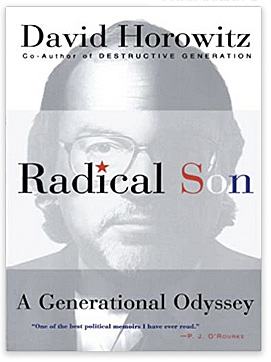
3. Radical Son: A Generational Odyssey by David Horowitz. 1997. This book supplements what we learn in Destructive Generation, and as the author points out, it is David Horowitz’s personal and generational odyssey from a left-wing radical to an intellectual leader of the conservative right.
This enthralling autobiography is a political testament of David Horowitz and traces three generations of his family’s political fortunes. From the publisher: “One American family’s infatuation with the radical left from the Bolshevik Revolution of 1917 to the collapse of the Marxist empire six decades later.
“David Horowitz was one of the founders of the New Left and an editor of Ramparts, the magazine that set the intellectual and revolutionary tone for the movement. From his vantage point at the center of action, he populates Radical Son with vivid portraits of people who made the radical decade, while unmaking America at the same time. We are introduced to an aged Bertrand Russell, the world famous philosopher and godson of John Stuart Mill, who in his nineties became America’s scourge, organizing a War Crimes Tribunal over the war in Vietnam. There is Tom Hayden, the radical Everyman who promoted guerrilla warfare in America’s cities in the Sixties, married film legend Jane Fonda, and became a Democratic state senator when his revolutions failed. We meet Huey Newton, a street hustler and murderer who founded a black militia that became the Sixties’ most resonant symbol of black power and black militance.
“Horowitz’s encounter with Newton and his Black Panthers, the most celebrated radical group of the Sixties, become the focal point of the story when a brutal murder committed by the Panthers changes his life forever, prompting the profound “second thoughts” that eventually led him to become an intellectual leader of conservatism and its most prominent activist in Hollywood.” I certainly agree. This book is a must-read and I cannot but make the highest recommendation. MAF
4. Radicals: Portraits of a Destructive Passion (2012) by David Horowitz is physically a relatively thin tome but it is a stout book in ideas and in deciphering the mentality of the left-wing radicals influencing and re-making American society — from the late 1960s to the present. Horowitz paints incisive psychological and biographical portraits of several radicals and interprets their nihilistic philosophy of hatred towards American freedom in contrast to the inexcusable affinity for America’s totalitarian enemies. Horowitz masterfully describes the destructive legacy these radicals have left in their wake.
Portrayed are Christopher Hitchins, a celebrated maverick commentator and seemingly rudderless author; Bettina Aptheker, an acclaimed professor and feminist accuser who blames everyone else for the ills of American society and her own failures; Cornel West, a celebrated academic, highly praised, but of questionable intellectual capacity, a reflection of lower academic standards and the precipitous decline in the prevailing American (liberal) culture; Kathy Boudin and Susan Rosenberg, unrepentant terrorist bombers pardoned by President Clinton in his last day in office; Susan Lydon, a liberated woman caricatured and praised in her obituary for her alleged feminism and sexual liberation agenda, not the real person, and for the wrong reasons; and finally Saul Alinsky, a radical chameleon and Machiavellian political activist, who has had and continues to have immense influence in liberal politics.
In fact, Alinsky, the radical “community organizer,” profoundly influenced both the Clintons, and the sitting president, Barack Obama and his wife Michelle. Alinsky’s lessons included the pursuit, attainment, and maintenance of political power by any means, including using subterfuge and forming alliances with other political groups, as long it is to the ultimate benefit of gaining political power. While reading about these radical luminaries, we also encounter and are regaled with dozens of other “fellow travelers” we meet along the way.
Radicals is eloquently written with artistic flare, brilliant turn of phrases, words precisely chosen, magnificently constructed prose. Yet, Horowitz’s observations are profound, astutely unlocking the mind of radicals and exposing their modus operandi with psychoanalytic and surgical precision. Radicals, in short, is highly recommended for the historical and political information, as well as for enjoying the masterful literary style in which it was written. I highly recommend this book for readers who want to understand the mind of radicals and their ultimate objective, the acquisition of power as to create a new society reflecting upon their own image.
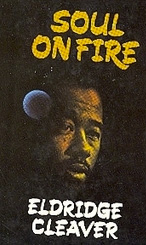
5. Soul on Fire by Eldridge Cleaver. (1978). Eldridge Cleaver’s first book was Soul on Ice, which was a radical, counter-culture tome indicting America for everything under the sun, from the perspective of a Black Panther leader. It was required reading for me in my freshman year in college. Cleaver renounced that book years later, but that tome still remains the only book by Cleaver that the media and academia still acknowledge.
Cleaver was not only a violent radical but a Black Panther revolutionary, who escaped from Oakland, California in a hail of bullets; when the smoke had cleared, he had vanished, escaped from the evil “American capitalism and imperialism.” He reappeared years later touring the various Worker’s Paradises. He had visited hard-core communist countries, North Korea, Cuba, and the USSR, where he was feted and honored. In those countries where supposedly “all men are equal and their dignity respected,” Cleaver found corruption, repression, lies, and racism. He was also welcomed in the social democracies of Western Europe, but even in these socialist countries with a “human face,” he could see through the dissimulation. Finally after seeing the light of truth, Cleaver recognized that the United States of America was the beacon of freedom in the world and that there was no better country on earth. He called the FBI and told them he was catching the next plane from Paris to the USA and to wait for him at the other end. He was turning himself in to face American justice. He would rather face prison in the United States than live as a fugitive in the socialist world! This journey is recounted in his later book, Soul on Fire.
And Soul on Fire is indeed, Cleaver’s true masterpiece, his personal journey from a violent Black Panther radical of the 1960s to a repentant and wise American patriot of the early 1980s! This book, by a small publisher (Word Books of Waco, Texas) is hard to find, but well-worth the search and the read iif you can find a copy! It is a magnificent narrative containing politics, memoirs, philosophy, and Eldridge Cleaver’s personal odyssey from radical revolutionary to conservative thinker. Find this book and read it! MAF
6. Our Enemy the State by Albert Jay Nock. 1935. This book by the libertarian Albert Jay Nock, a gifted writer and founder of The Freeman magazine, shows that libertarians can be on the extreme right of the political spectrum and sometimes can even border on a pacifist form of anarchism. As I wrote in March 1997 when I first finished reading it, “This book is anarchism at its best.” This book is an antidote against statism and collectivism, but don’t expect modern socialists to read it.
7. Fire in the Minds of Men: Origins of the Revolutionary Faith by James H. Billington. 1999. Billington’s tome is a veritable tour de force on the history of political philosophy, tracing the origins of social and economic change, radical politics, the concept of violent revolution, and the various conspiracies hatching in the minds of men nurturing these ideas, usually for the worse.
Until 1848, the two types of revolutionaries that emerged from just before and during the French Revolution fought together. Now they split into two types: The social-political revolutionaries and the pure nationalist revolutionaries. They had been fighting together — liberals, socialists, syndicalists, anarchists, and protocommunists against the established order. The socio-political revolutionaries wanted liberty and equality — unbeknownst to them at this time, these were two mutually exclusive concepts. The latter, the nationalist revolutionaries, wanted independence from the old empires of Europe, particularly from Spain and Austria (e.g., Serbs, Croatians, Montenegrins; while the Germans and Italians wanted unification, as well, and forming their own countries along ethnic and linguistic lines. After the failure of the nationalist revolutions of 1848, the revolutionaries split into those two emerging factions, and “no longer fought on the same side of the barricades.” Additionally as time proceeded, the first type of revolutionaries further split into political revolutionaries who wanted personal freedom and liberty (and who unfortunately gradually faded away); and the social revolutionaries, who wanted social equality and the leveling of society along economic lines, and whose revolutionary fervor sadly degenerated into social democrats and communists.
The book documents that the universal theme of the revolutionary faith, from communists and socialists to nihilists and anarchists, is for the most part a perverse and deceptive illusion, a dream of utopias, that turn into nightmares of political violence and bloodshed rather than into heavens-on-earth.
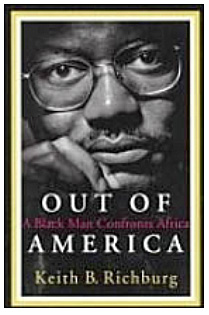
8. Out of America: A Black Man Confronts Africa by Keith B. Richburg. 1997. “This outstanding book by a black American journalist for The Washington Post recounts the emotional and spiritual awakening of the author upon his fateful visit to his ancestral home, Africa. He vividly recounts his adventurers and journalistic travails on the Dark Continent, and finds he belongs happily and unregretfully in America. He thanks Providence for the fact his ancestors were brought to America, even as slaves, so that he could be born a free man in America. One of the most poignant scenes in the book sums it up. In shock, he sees countless numbers of black corpses floating down a river in Rwanda. He states, as politically incorrect as it may be, “There but by the grace of God, go I.” The book is a must read for everyone, particularly those who want to supplant America for a utopian paradise that has never existed in Africa or elsewhere — not even in socialism, communism, or any form of collectivism.” 1999 Amazon.com book review written by MAF.
9. Beyond Freedom and Dignity by B.F. Skinner. 1971. In his book, psychologist B.F. Skinner wages war against the cherished Western concept of individual freedom and the dignity of man. See Dr. Miguel Faria’s complete book review posted on this website.
10. The Morality of Self-Defense and Military Action: The Judeo-Christian Tradition by David B. Kopel. 2017. An excellent and well-researched book. See Dr. Miguel Faria’s complete book review posted on this website.
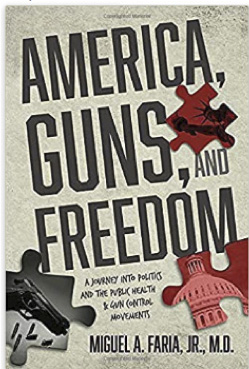
11. America, Guns, and Freedom: A Journey Into Politics and the Public Health & Gun Control Movements by Miguel A. Faria, Jr., MD. 2019. America, Guns, and Freedom outlines why the Second Amendment and armed self-defense are still needed in modern society, debunks the arguments that the U.S. should follow the path of European social democracies by enforcing draconian gun control, and expounds on how civilian disarmament in Australia and Great Britain, despite media hype, has not decreased violent crime in those countries.
Dr. Miguel Faria’s journey into politics and the public health and gun control movements began when, as editor of the Journal of the Medical Association of Georgia, he studied the problem of gun violence and discovered the gun research conducted by the medical establishment was not scientific research as claimed, but politicized, result-oriented propaganda designed to bolster the preordained conclusion that guns should be eradicated from the general population. Faria and three other experts testified before a congressional subcommittee, exposing the pseudoscience of the gun research conducted by the Center for Disease Control (CDC) and proposing the elimination of funds for such research. Congress agreed and passed the Dickey Amendment, restricting CDC gun research that advocates for gun control.
In America, Guns, and Freedom, the author warns us of the five essential ingredients required for the creation and sustenance of tyrannical governments, one of which has been civilian disarmament via gun registration followed by gun bans and confiscation. Faria discusses mass shooting incidents and the role of mental illness. Special attention is given to the problem of how media sensationalism may encourage deranged individuals and madmen to become mass shooters seeking celebrity status, even in death.
While gun control advocates decry America’s “gun culture,” Faria informs us of the significant role that this “gun culture” played in saving England during World War II. American traditions have been and remain beacons of liberty, and this is most evident in America, Guns, and Freedom. Totalitarian governments that deny their citizens the right to keep and bear arms are a threat to life, liberty, property, and the pursuit of happiness.
See Dr. Russell Blaylock’s complete book review posted on this website.
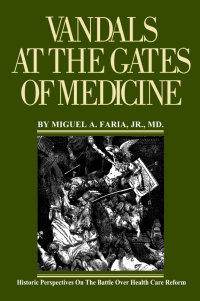
D. Health Care:
1. Vandals at the Gates of Medicine: Historic Perspectives on the Battle Over Health Care Reform by Miguel A. Faria, Jr., MD. 1995. Read the complete book review on this website.
2. Medical Warrior: Fighting Corporate Socialized Medicine by Miguel A. Faria, Jr., MD. 1997. Read the complete book review on this website.
3. The Serpent on the Staff: The Unhealthy Politics of the American Medical Association by Howard Wolinsky and Tom Brune. 1994.
4. Code Blue: Health Care in Crisis by Edward R. Annis, MD. 1993. Read the complete book review on this website.
5. Your Doctor Is Not In by Jane M. Orient, MD. 1993.
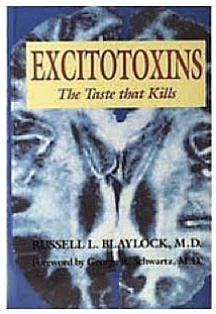
6. Excitotoxins: The Taste that Kills by Russell L. Blaylock, MD. 1994. This book, written by a board-certified neurosurgeon, “describes what excitotoxins are, where they are found, and how they react in the body. Dr. Blaylock presents the latest research findings to demonstrate how exposure to excitotoxins will damage nerve cells in the brain. The use of aspartame, hydrolyzed vegetable protein, and monosodium glutamate in prepared foods and beverages continues to increase on a yearly basis. Dr. Blaylock clearly demonstrates that the neurotoxic potential of excitotoxins such as MSG and aspartame (NutraSweet) is so overwhelming that it can no longer be ignored.”
7. Health and Nutrition Secrets That Can Save Your Life by Russell L. Blaylock, MD. 2002. Dr Faria writes: “Dr. Blaylock’s latest magnum opus contains superb chapters covering essentially every aspect of health and nutrition; brain and body protection against toxins, injury, and disease; and even defense against bioterrorism.
“He covers causes of degenerative diseases, including the bad effects of free radicals and the benefits of certain minerals, vitamins, and other more powerful antioxidants; nutrition, genes, and genetic switches; the danger of mercury from various sources; the effect of fluoride from drinking water, toothpaste, and other sources; other toxic metals to avoid; vaccination hazards; toxic food additives; pesticides and other harmful chemicals; and causes of arteriosclerosis, stroke, heart attack, and other diseases of aging and how to prevent them.”
This is the one book that every household should have! Read Dr. Faria’s complete book review on this website.
8. Patient Power: The Free-Enterprise Alternative to Clinton’s Health Plan by John C. Goodman and Gerald L. Musgrave. 1993. Do you want to enhance your access to quality medical care? Do you want to maintain control of your own health care? Are you tired of insurance companies or other third-party payers interfering with your medical care decisions? Marvelous tome that is simple-to-read, easy to understand, and explains, in plain English, the only true free-market alternative to all the various socialized medicine schemes that have been offered up, and that is, Medical Savings Accounts (MSAs). In Patient Power, the authors will tell you exactly how to regain control of your own medical care!
9. The Neuropsychiatry of Limbic and Subcortical Disorders by Stephen Salloway, Paul Malloy, Jeffrey L. Cummings (eds). 1997. Read Dr. Miguel Faria’s complete book review on this website.
10. The Frontal Lobes and Neuropsychiatric Illness by Dr Stephen P. Salloway, Dr Paul F. Malloy, and Dr James D. Duffy, editors. Washington, DC; American Psychiatric Publishing, Inc.; 1st Edition (May 1, 2001). Read Dr. Miguel Faria’s complete book review on this website.
11. In Search of Memory: The Emergence of a New Science of Mind by Eric R. Kandel. New York, NY: WW Norton; 2006. Read Dr. Miguel Faria’s complete book review on this website.
12. Plants of the Gods: Their Sacred, Healing, and Hallucinogenic Powers by Richard Evans Schultes, Albert Hofmann, and Christian Rätsch. Rochester, Vermont: Healing Arts Press (1998).
E. Cuba
1. Cuba in Revolution: Escape From a Lost Paradise by Miguel A. Faria, Jr., MD. 2002. “Thirty-six years ago after a harrowing ordeal at sea, Miguel A. Faria, Jr., escaped from Cuba with his father and found a new home in the United States. Cuba’s loss was America’s gain. A consummate historian, Dr. Faria here applies himself with gusto, using a treasure-trove of inside information to tell his personal odyssey and to reveal the true story of the Cuban Revolution and its sell-out to communism. Especially noteworthy are the unknown stories of the Cuban patriots who fought Castro’s communist regime.” (Read Dr. Jerome Arnett’s on this site.)
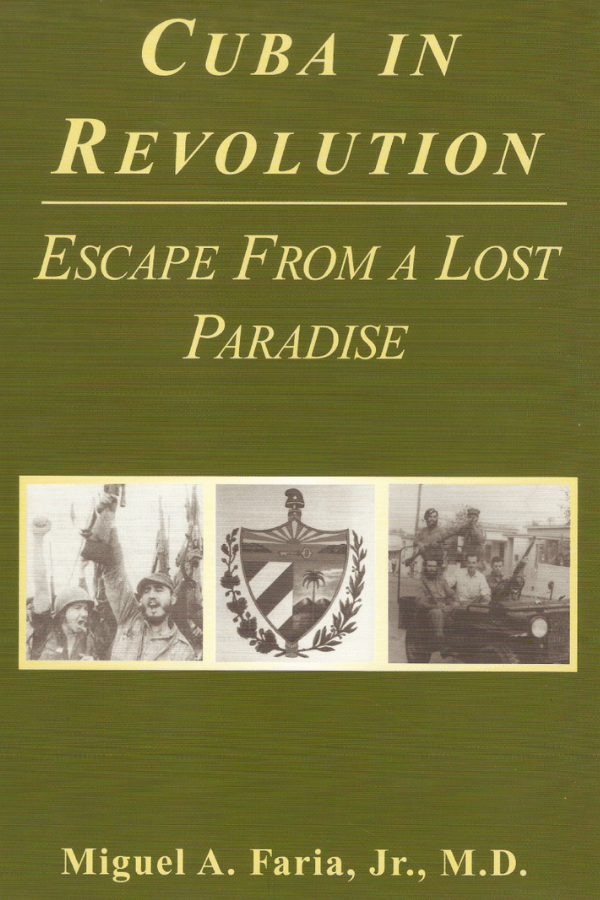
And, here is what Dr. Russell Blaylock writes about this book: “Most of us who enjoy reading books concerning our world, especially those dealing with acts of courage arising from human tragedy, find a few works that have a lasting effect on our lives, not just because of the subject, but because of the way in which it is presented. Few writers can fill the reader with an overwhelming sense of emotion that normally only comes with first hand experience. I found this in Alexandr Solzhenitsyn’s The Gulag Archipelago and Armando Valladares’ Against all Hope….” (Read Dr. Russell Blaylock’s complete book review on this site.)
Cuba in Revolution: Escape From a Lost Paradise reveals the untold story of the Cuban Revolution, an eyewitness account weaved through a boy’s intrepid escape via several Caribbean islands. Dr. Miguel Faria pounces on the purported triumphs of the Revolution, unravels the alleged gains, exposes the truth, and sets straight the historic record. The picture that comes to light is that of a brutal police state, mass repression, desolation, privation, and intolerance.
2. Dagger in the Heart: American Policy Failures in Cuba by Mario Lazo. 1968. This is an early epic history of the Cuban Revolution up to the early 1960s by Mario Lazo, an upper class Cuban lawyer, who was well-connected to and a major player in the elite Cuban-American business community. And yet, Lazo was no close-minded Batistiano but a concerned Cuban patriot. And his book is very poignant, the work of an informed citizen, who saw his nation disintegrate and did what he could to save the pieces. Moreover, as an insider, he relates how the U.S. lost opportunity after opportunity to help the island from falling to communism; instead the men of the U.S. State Department did what they could to see that the revolutionaries prevailed against Cuban President Fulgencio Batista. This is a must read book, and a beginner’s entry into Cuban revolutionary history.
3. Fidel Castro by Robert E. Quirk. 1993. This is the most comprehensive biography of the Communist dictator to date, yet it is quite readable. Quirk’s scholarship is superlative. This biography is magnificent and plainly fascinating! No other book about the life and times of Fidel Castro comes close to matching Quirk’s magnum opus!

4. Mea Cuba by Guillermo Cabrera Infante. 1992. A thoughtful collection of writings by the famed Cuban author and editor of Lunes de Revolucion literary magazine. This is required reading for the literati of Cuban revolutionary literature and cultural history.
The stories and repression of Cuban poets and writers at the time of the Revolution is told splendidly by Cabrera Infante. From those who went along, Alejo Carpentier, Ernest Hemingway, Gabriel Garcia Marquez, Nicolas Guillen, and Alfredo Guevara; those who saw the coming dictatorship (too late), Carlos Franqui, Heberto Padilla, Carlos Alberto Montaner, and Cabrera Infante; those who refused to compromise and escaped, Reinaldo Arenas, Luis Aguero, and Walterio Carbonell; those who perished in and became victims of the Revolution, Virgilio Pinera and Jose Lezama Lima. What a panorama!
The destruction of artistic talent in Cuba reminds one of the same happenings in Russia immediately after the Bolshevik Revolution — i.e., the loss of the rich fountain of artistic and literary geniuses during the silver age of Russia, Zinaida Gippius, Alexander Blok, Andrei Bely, Marc Chagall, Vladimir Mayakovsky!
What was the intelligentsia in Cuba permitted to write and express their artistic and literary talents immediately after the triumph of the Revolution? As Fidel Castro told them at a convened writers’ meeting: “Within the Revolution everything; outside the Revolution, nothing!”
5. Shadow Warrior: The CIA Hero of a Hundred Unknown Battles by Felix I. Rodriguez and John Weisman. 1989. This is the story of courage of Felix Rodriguez, one of the great heroes of Cuba and the United States in the 20th Century. He participated in the Bay of Pigs invasion, and in CIA covert operations in Central America, in the Caribbean, and in Europe as well as in Far East Asia. Rodriguez presided over the capture and execution of Che Guevara in Bolivia, testified at the Iran-Contra Hearings, and…well, you will have to read his book!
6. Against All Hope:The Prison Memoirs of Armando Valladares by Armando Valladares (1986). This is a kafkaesque drama which turns into a living nightmare, the stories of the Cuban Solzhenitsyn and his fellow prisoners in the gulag system of that imprisoned island. But Valladares, like Solzhenitsyn before him, could not be broken by the system of torture and repression, despite 20 years of living hell. This memoir is highly recommended, but (and this is not a cliche warning) the book is not for the squeamish!
7. Cuba en Guerra: Historia de la Oposicion Anti-Castrista 1959-1993 by Enrique Encinosa. 1994. Written in Spanish. “This book is not for the easily offended or faint-hearted. The poignant text, carefully annotated, meticulously researched, and succinctly put together by Enrique Encinosa is accompanied by graphic photos of rebel leaders…who died or were captured and executed by the communist dictator while attempting to bring freedom to Cuba….Why would campesinos (peasants), workers, or students pick up arms and lead open revolts in the Escambray Mountains against Fidel Castro’s “worker’s paradise?” Why would Cuban exiles living good comfortable lives in Miami with their families leave the U.S. to go back to Cuba, breach communist defenses to conduct clandestine operations, infiltration, and uprisings against Fidel Castro’s communist government? You must read this book to find out.” Read Dr. Miguel Faria’s complete book review on this website.
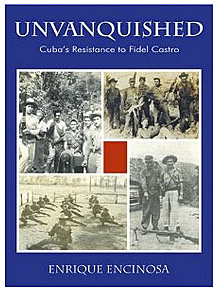
8. Unvanquished: Cuba’s Resistance to Fidel Castro by Enrique Encinosa. 2004. Although non-fiction, this book reads more like a novel! “It’s the stupendous work of the serious scholar, Enrique Encinosa, who has written the definitive works on the guerrilla wars waged by anticommunist Cuban rebels against the repressive, totalitarian regime of Fidel and Raul Castro….Those who have opined that Cubans have not fought enough to obtain their freedom should read Encinosa’s chronicle. This is the story that proves them wrong. This little tome chronicles the previously unwritten and little-noticed, heroic efforts of those who have tried to bring freedom to Cuba by armed insurrection from inside and outside Cuba, efforts that have been ignored by the American media…” Read Dr. Miguel Faria’s complete book review on this website.
9. Cuba: Dilemmas of a Revolution by Juan M. del Aguila. 1994. A well researched, written, and annotated book by Emory University Political Science Professor Juan del Aguila. Essential tome for the Cuban economic and political faction researcher in the early days of the Revolution.

10. Insider: My Hidden Life as a Revolutionary in Cuba by Jose Luis Llovio-Menendez. 1988. The story of a young Cuban student revolutionary married to a Parisian beauty and heiress and living in Europe who gets enticed to return to Cuba after the triumph of the Revolution. Upon his return, Llovio-Menendez becomes trapped in the island prison. The workers’ paradise turns out not to be as described, but he finds this out too late. His family is exiled or imprisoned, and seemingly there is no exit for him!
11. Bay of Pigs: The Untold Story by Peter Wyden. 1979. Along with the book mentioned below, this tome is a good beginning chronicle of the Bay of Pigs fiasco, which Fidel Castro called “the first defeat of Yankee imperialism in America.”
12. The Bay of Pigs: The Leaders’ Story of Brigade 2506 by Haynes Johnson. 1964. This book, as well as the one mentioned above, compliment each other even though they are written from two different perspectives. This book is more passionate, written from the viewpoint of the Cuban exile participants. Both are highly recommended reading.
13. The Sugar King of Havana: The Rise and Fall of Julio Lobo, Cuba’s Last Tycoon by John Paul Rathbone. 2010. This book is fully described in the Biographies section above.
14. Cuba: Viaje Al Pasado by Roberto A. Solera. 1994. One of the few books that reveals information about the surviving leaders of the Student Revolutionary Directorate, who fought against Fulgencio Batista and then joined the Revolution led by the opposite rival group, Fidel Castro’s 26 of July Movement.
15. Natumaleza Cubana by Carlos Wotzkow. 1998. With Prologue by Guillermo Cabrera Infante. This book is required reading for environmentalists, who refuse to see the realities of a communist dictatorship and the ecological disasters in its wake. Central planning is bad for economic and social freedom as well as the environment.
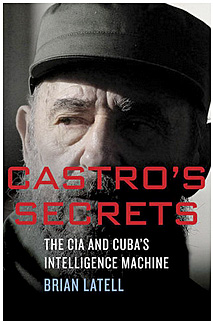
16. Castro’s Secrets: The CIA and Cuba’s Intelligence Machine by Brian Latell. 2012. The author — a professor, scholar, and retired CIA officer, who had been active in foreign intelligence for 35 years — relies extensively on information provided by Cuban defectors and describes the largest and longest lasting double agent operation in the annals of world espionage. See Dr. Miguel Faria’s complete book review posted on this website.
17. After Fidel: The Inside Story of Castro’s Regime and Cuba’s Next Leader by Brian Latell. 2005. In After Fidel, author Brian Latell — a National Intelligence Officer (1990-1994) and the top analyst for Cuba and Latin America for all the U.S intelligence agencies — describes in persuasive detail the personal relationship between Fidel and Raúl Castro. The book also contains dramatic revelations about the Castro brothers, even for those familiar with the history of the Cuban Revolution and the many biographies of Fidel Castro. See Dr. Miguel Faria’s complete book review posted on this website.
VII. Fiction:
A. Political Science Classics:
1. 1984 by George Orwell. 1949. Norwalk, CT, Easton Press edition, 1992. This is Orwell’s masterpiece of political philosophy using a futuristic world of collectivist dystopia to denounce totalitarianism and the brutal subjugation of the individual to the state. The reader is invited to read Dr. Miguel Faria’s article, “Liberal Orthodoxy and the Squelching of Political and Scientific Dissent,” in which George Orwell’s tour de force, 1984, is used as an introduction to his article.
2. Animal Farm by George Orwell. 1946. Norwalk, CT, Easton Press edition, 1992.
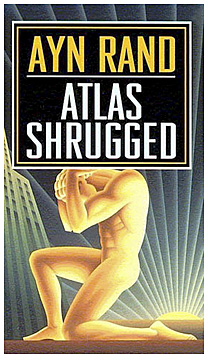
3. Atlas Shrugged by Ayn Rand. 1957. Please see the movie reviews of this monumental novel espousing Rand’s individual-based Objectivist philosophy, which she developed as an antidote to the traces of the poison of collectivism she already detected in her time and foresaw in the suffocating future world of ours!
4. The Fountainhead by Ayn Rand. 1943. An architect fights to preserve his individualism and the originality of his work against the tide of conformity — and the lack of innovation and mediocrity such collectivist conformity fosters.
5. Brave New World by Aldous Huxley. 1932. Easton Press edition, 1978. A futuristic, dystopia I chose to place in this section of political science classics. In a futuristic society, the people are bred articially to serve specific societal tasks, as workers or professionals. The elites running society keep the populaton servile and content by administering an euphoric drug, Soma (i.e., “all the advantages of Chrisitianity and alcohol; none of their defects.”), to keep the workers happy, submissive, and productive. Independence of thought and action was not tolerated: ” ‘ By his heretical views on sport and soma, by the scandalous unorthodoxy of his sex-life, by his refusal to obey the teachings of Our Ford and behave out of office hours, even as a little infant, (here the Director made the sign of the T), he has proved himself an enemy of Society, a subverter, ladies and gentlemen, of all Order and Stability, a conspirator against Civilization itself. For this reason I propose to dismiss him, to dismiss him with ignominy from the post he has held in this Centre…’ “
An excellent television movie (1998) was made of this novel starring Leonard Nimoy (as World controller Mustapha Mond) and Peter Gallagher (as Bernard Marx, an alpha executive at the Department of hatcheries and Conditioning). Marx is increasingly coming under scrutiny for his monogamous relationship with a school teacher and his unorthodox theories of human psychology…
B. General Classics and Historic Novels:
1. The Magic Mountain by Thomas Mann. 1924. The Magic Mountain is an enchanting novel by German novelist and short story writer, Thomas Mann (1875-1955), who received the 1929 Nobel Prize for Literature. This tour de force novel relates the story of Hans Castorp, a young engineer who goes to visit his tubercular cousin, Joachim Ziemssen at a tuberculosis sanatorium in Switzerland, The Berghof, “The Magic Mountain.” Hans’ last name Castorp perhaps alludes to the mythic twin Roman gods Castor and Pollux engendered in the close relationship between Hans and his cousin Joachim.

Hans finds himself enjoying his sojourn at the sanatorium, mingling with the patients, conversing with his cousin and other convalescing characters, including the enigmatic Lodovico Settembrini, a secular humanist, whose persona is likely based on Thomas Mann himself, reflecting Mann’s political and philosophical leanings as a German socialist and intellectual man-of-letters. Hans learns much in the philosophic antagonism between Settembrini and his antagonist, Leo Naphta, a Jew turned Jesuit, who leans toward Marxist totalitarianism.
It turns out that The Berghof becomes a comfortable and dreamlike, totally enchanting place for Hans Castorp who finds himself unable to cut short his visit and return home to face the world as a young engineer. Instead, he becomes enamored of a charming aristocratic Russian lady, Madame Clavdia Chauchat, and the Magic Mountain itself. Moreover, it soon becomes obvious that Hans may also be infected with the tubercle bacillus, increasing the complexity of his situation and providing him with a valid reason to stay on the Magic Mountain. Castorp stays at the Berghof for seven years and only leaves to join the German army with the advent of World War I.
The novel provides a vehicle for Mann to discuss the advances and mysteries in medicine — for example, the use of x-rays, which had only been discovered in 1895 by the physicist Wilhelm Conrad Roentgen, and Sigmund Freud’s development of psychoanalysis and his theory of the unconscious. The novel also serves as a medium to describe complex personal interelationships and social interactions in society at large, and even more profoundly, the toll of diseases and human suffering, ultimately death and dying, as metaphors for man’s existence, journey and final exit on this planet.
The Magic Mountain has been the subject of discussion in medicine and philosophical publications, including The Pharos, the Journal of the Alpha Omega Alpha Medical Honor Society during the 1980s and 1990s. In one interview before his death in 1955, Thomas Mann felt flattered that his book had been discussed in so many intellectual circles and that so many interpretations had been ascribed to his magnum opus, The Magic Mountain.
2. The Works of Edgar Allan Poe in Ten Volumes. 1904. The Cameo Edition. Everyone is familiar with Poe’s classic Tales and well-known poems and short stories, such as The Raven, The Oblong Box, The Pit and the Pendulum, The Cask of Amontillado, The Tell-Tale Heart, The Black Cat, and The Fall of the House of Usher. But Volume II of this collection contains a rare gem, Narrative of A. Gordon Pym. This is Poe’s only full length novel and in a quirk of literary fate, it is one of his least known works. However, the reader will discover that many of the sub-plots contained in this novel have been widely used in classic adventure tales by a myriad of authors and Hollywood movies. This exquisite work is highly recommended.
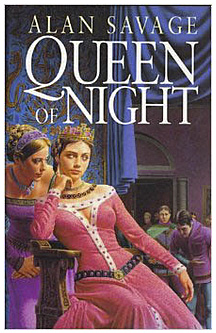
3. Queen of Night by Alan Savage. 1993. Little, Brown & Company. This 432-page, historic novel recounts the story of Queen Joanna I of Naples (1326 -1382). Joanna was related by blood to both the enterprising noble House Anjou (i.e., Angevins) and the Royal Valois dynasties of France. As a child she was Duchess of Calabria and upon the death of her grandfather, King Robert of Naples, in 1343, she became the Countess of Provence and Queen of Naples as well as titular Queen of Jerusalem, until her death in 1382. She was also deemed the most beautiful woman in Europe and the most treacherous, implicated in the death of her first husband, Andrew, a Hungarian Prince of the blood and also Duke of Calabria,
This novel is enthralling and magnificently written in elegant prose that at times reaches poetic eloquence. The superb narrative captivates the essence of the times in the descriptive settings, the passionate sentiments expressed by the characters, their dialogues, and the accurate description of Medieval historic events entwined to the historic characters. The book reflects accurately the splendor, romance and brutality of the era. The scholarship of the author is evident because, for the most part, the depicted events are chronologically accurate, and the characters are real, historical figures — except, of course, for the other main protagonist in this historic and titillating drama. I refer to the fictitious Richilde Benoit, Joanna’s loyal maiden and alter-ego in her court in Naples. It is the adventures of Richilde, acting as Joanna’s ambassadress that bring to life all the important and historic events that took place in Europe during this period.
And so we not only learn the intrigue, romance and betrayal in the Court of Naples but also the events that shaped European history during this time: The Hundred Years War between England and France with the adventures of the Black Prince in France and Aquitaine, including a vivid description of the Battle of Poitier, and the capture and ransom of King John the Good; the terrible Black Death; the pillage, plundering, rape and savagery of the Jacquerie peasant uprising; the Western Schism and the pageantry, intrigue, and corruption of the court of Clement VI in Avignon during the “Babylonian Captivity”; the curious story of the enigmatic politician, Cola di Rienzo (1313-1354), the Papal envoy, who became the popular and anachronistic demagogue as “Tribune of the Roman People,” and wanted to revive the ancient Roman Republic, but instead perished in the hands of the once adoring, always fickle and duplicitous, and now enraged and brutal mob of Medieval Rome; the Christian Reconquista of Spain and the workings of the harem in the Moorish court of Alhambra in Granada; the revolting inquisition that inflicted pain and torture to elicit confessions in those accused of being heretics or witches, etc.
One word of caution is now in order: Through all of these adventures, the author becomes a bit prurient, and in a few occasions even sadistic, in his narrative, which may be excessive for some readers, even offensive to others, particularly women. We must recognize, though, the period of which he writes and the attitudes of the epoch, and we must prod through over these licentiousness and over-sensualized occasions as novelistic license and continue with the engaging narrative!
Fiction and cohesion of the drama are maintained with the adventures, sex, trials and tribulations of the brave, loyal, indomitable, and beautiful Richilde, while sensual Queen Joanna is the anchor in this historic and sensual masterpiece. The book is a veritable cliffhanger that the reader will have difficulty putting aside until the surprise ending. This historical novel, illuminating an obscure but intriguing epoch in European history, with its poetic narrative, verve, and finesse is highly recommended for adults interested in Medieval history and adventure.
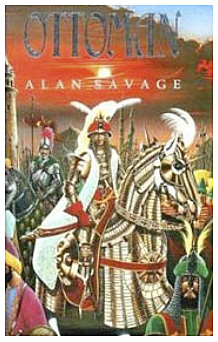
4. Ottoman by Alan Savage. 1991. Time Warner. Ottoman is a fictionalized historic novel of a renegade English family and their male descendants, who while preserving some of their English mores, nevertheless, served faithfully the fierce and treacherous Ottoman sultans, from the time just preceding the conquest of Constantinople in 1453 to the eve of the decisive Turkish defeat at the Battle of Lepanto in 1571.
While the English family of the Hawkwoods, through five generations, and many of the characters they come in contact with, are fictitious, the major historic figures and the principal events that take place in this novel are historic.
John Hawkwood, an English artillerist and his family arrive in 1448 to the magnificent and dazzling city of Constantinople to serve the good Byzantine Emperor Constantine XI Paleologos. The Greeks, though, turned out to be corrupt and treacherous, and due to circumstances beyond his control, John Hawkwood is forced to flee Byzantium. He ends up being captured by the Ottomans and serving the fierce Sultan Mohammed I, who is bent on conquering Constantinople. As master gunner, the first Hawkwood builds the gigantic cannon that breaches the massive walls of Constantinople in 1453.
During the assault, Emperor Constantine dies courageously at the walls with his small army of 5,000 defenders. The city is sacked; the treasures plundered, and the victorious sultan becomes known as Mohammed the Conqueror. Thereafter, the huge and undefeated armies of the sultan, including his magnificent Janissaries, continue their Western conquests — from Constantinople to Sofia, Belgrade, Bucharest, Wallachia, and Hungary, all along the Danube, to be defeated only at the impregnable walls of Vienna. In the East, the Ottomans defeat the Arabs, the Syrian Mamlukes, and the Persians. The Ottomans are greatly feared and seemed virtually unstoppable.

Despite treachery, savagery, massacres, pillage, and plunder, the various Hawkwood men served the Turkish sultans faithfully as generals, admirals, even as ambassadors to Christendom, but they are all at heart fierce Ottoman warriors. Their women are beautiful but captive slaves, who become wives or concubines, and by in large fulfill their roles as submissive sexual partners. Five successive “Hawk Pashas” served the all powerful “Padishah” Sultans of Constantinople — i.e. Mahomet the Conqueror (r. 1451-1481), Bayazid II (r. 1481-1512), Selim I the Grim (r. 1512-1520), Suleiman the Magnificent (r. 1520-1566), and Selim II the Drunkard (r. 1566-1574). Adventures take the Hawkwoods to meet King Louis XI and King Francis I of France; Cardinal Rodrigo Borgia, later Pope Alexander VI, and his son Cesare and daughter Lucrezia, as well as the greatly feared Ottoman corsair Barbarossa. Jealous pashas, plotting Grand Viziers, slavish eunuchs, and the intrigues of Roxelana, the ambitious Russian wife of Suleiman, add to the intrigues and suspense of the story.
But in the end, the fifth Hawk Pasha is dishonorably betrayed by the Sultan Selim II, who orders a massacre of the Venetian defenders (and inhabitants) of the captured island of Cyprus. Hawk Pasha had negotiated a peaceful surrender and had promised the brave defenders safe conduct on his word of honor, as promised by the sultan. The betrayal is too much for Hawk Pasha, and with his family, including his supportive Venetian wife, Barbara Cornaro, a niece of the Venetian Doge, Alvise Mocenigo I (r. 1550-1557), they escape to Venice.
With the blessings of the Doge Mocenigo and Pope Pius V (r. 1566-1572), the last Hawk Pasha joins the combined Christian fleet of Venetian, papal, Genoese, and Spanish galleys, which are being assembled in Messina. The large fleet is commanded by Don Juan of Austria, the half-brother of King Philip II of Spain. Guided by the advise of the former naval Ottoman commander, Hawk Pasha, the Christian fleet, although outnumbered, valiantly defeats decisively the Turks at the Battle of Lepanto in 1571. The last Hawk Pasha thus returns to Christendom and settles with his family happily in Venice.

This is an excellent historic novel but not for the squeamish; there is plenty of sex, blood, gore, and betrayal, reflecting the mores and violence of the times. It is recommended for all readers interested in the history of the period written with flare, passion and the usual novelistic license. (4/5 rating)
5. Moghul by Alan Savage. 1991. Moghul is a historic novel of adventure, sex, and brutality of epic proportions. As with Ottoman, Alan Savage’s previous dazzling adventure tome, this novel concerns and revolves around a fictitious (and not quite) renegade English family of male descendants, the Blunts, who while preserving some of their English identity through several generations, nevertheless, serve faithfully the ruling Moghul dynasty of Northern India (Hindustan) and Afghanistan. The time span is close to that of the chronicles of Savage’s previous novel, Ottoman, a time period concurrent with the late Renaissance in the West (spanning the late 15th through the early 17th centuries) with which Savage seems to be quite conversant. See Dr. Miguel Faria’s complete posted on this website.
6. Aztec by Gary Jennings. 1980. Epic of the fall of the Aztec Empire, as it fatally clashes with the advent of the conquistadors.
C. Historic Novels by Colleen McCullouch:

1. The First Man in Rome. 1990. William Morrow and Company, Inc. Historic novel. This is a wonderful introduction to the “Masters of Rome” series of historic novels by famed author Colleen McCullough. The first tome in this series, The First Man in Rome, at 896 pages, including magnificent maps, glossary, even sketch portraits of many of the main characters, is incredibly well-researched. Crisp writing, eloquent prose, exhilarating reading, spellbinding plots and intrigue — are all parts and parcel of this literary, unfolding, historic drama. The historic novel would have been a complete masterpiece had not the author fallen head over heels for the main protagonist, Gaius Marius, to the detriment of other historic figures who deserved better, particularly when the author boasted of historic veracity. Indeed, McCullough’s scholarship is outstanding, and her literary abilities certain; the problem lies elsewhere, apparently her politics and her prejudicial bias for the Populares faction at the expense of the Optimates and the historical veracity she claimed.
Thus, to cover her political leanings, the author does not use those terms at all in her novel, as she “does not want to give the impression that there were formal political parties.” The reality is she does not want to make her liberal leanings too obvious to her readership. Had she used those helpful and historic political terms, it would have made it too obvious that at least in her mind, with few exceptions, all the popular leaders and political demagogues pandering to the mob were the good guys with nobility of purpose and good intentions (e.g., not only Marius, but Saturninus and later Sulpicius, Cinna, and Carbo), while the Optimate leaders and the members of the old conservative-leaning families, those upholding the mos maiorum (i.e.,”the established order of things and the ‘established customs of ancestors”) were, almost uniformly, the bad guys (e.g., Caecilius Metellus Numidicus was turned into an incompetent general and undeservingly nicknamed “Piggle-Wiggle”; his son Metellus Pius made to stutter and called derisively “the Piglet”; the Caepios, with some truth, are severely turned into despicable villains). Lucius Cornelius Sulla is turned into a Dr. Jekyl and (mostly) a Mr. Hyde, a homosexual poisoner and serial killer with misogynistic tendencies and prone to pathological violence. In book two of this series, The Grass Crown, Sulla is even made to kill by poisoning a member of his party and mentor, Caecilius Metelus Numidicus, enraged in a completely fictional and implausible scenario!
Needless to say, those readers attuned only to historic melodrama, but not necessarily “qualified to judge” in the historic arena and oblivious to historic reality and political sentiment, will find no fault with this book and may even misconstrue my “parochial” criticism as undeserved. These valid caveats still do not detract me from recommending this book (4 out of 5 stars). Read Dr. Miguel Faria’s complete book review entitled “The First Man in Rome — The Apotheosis of Gaius Marius!”

2. The Grass Crown. 1990. William Morrow and Company, Inc. Historic novel. The magnificent “Masters of Rome” series of historic fiction by novelist Colleen McCullough continues down the annals of the Roman Republic with the notable careers of Gaius Marius, Lucius Cornelius Sulla, Aemeilius Scaurus, Metellus Numidicus, Metellus Pius, and Marcus Livius Drusus. This second tome at 894 pages also contains magnificent maps, improved glossary, and sketch portraits of many of the main characters. The scholarship still astonishes as does the crisp writing and exhilarating reading in this historic drama. The informative and elegant correspondence to and from Publius Rutilius Rufus, now expanded to Marcus Aemilius Scaurus and Lucius Cornelius Sulla, continues in The Grass Crown. As discussed in the full review, I recommend this second tome with some caveats and assign it 4 out 5 stars. Read Dr. Miguel Faria’s complete book review entitled “The Grass Crown — Ancient Rome: Marius vs Sulla and the Marsian Wars!”
3. Fortune’s Favorites. 1993. William Morrow and Company, Inc. Historic novel. Fortune’s Favorites is the third installment of the fascinating Masters of Rome series of historical novels by famed Australian novelist Colleen McCullough. The 878-page book opens in 83 B.C., as the triumphant general, Lucius Cornelius Sulla, returns from the East after his successful campaign against King Mithridates VI of Pontus. The book ends with events taking place at approximately 69 B.C. surrounding the rivalry and rise of Pompey the Great and Marcus Licinius Crassus, while young Julius Caesar is biding his time and foreshadows a political and military career superior to them both, a worthy descendant of Venus and Aeneas!As discussed in the full review, I recommend this third tome with some caveats and assign it 4 out 5 stars. Read Dr. Miguel Faria’s complete book review entitled “Fortune’s Favorites in Ancient Rome: Sulla, Pompey, Crassus, and Caesar”

4. Caesar’s Women. 1997. William Morrow and Company, Inc. Historic novel. Caesar’s Women is the fourth installment of the Masters of Rome historical book series by novelist Colleen McCullough. This 696-page tome covers the eight years of the Late Roman Republic from 67 B.C. to 59 B.C., including the revolt of Aemilius Lepidus; the Conspiracy of Catilina and the passing of the Senate’s Ultimate Decree; the curious episode of the Consul Marcus Calpurnius Bibulus (also an augur) withdrawing to his house to watch the stars and cancel the legislative acts of his very active fellow Consul Julius Caesar; the sacrilege of Clodius Pulcher, and Caesar’s consequent remark that his wife must be above suspicion, etc. The main characters are Julius Caesar, who is mostly in Rome, intriguing and womanizing, while ironically presiding over Rome’s civic religion as supreme Pontifex Maximus; Marcus Licinius Crassus, the plutocrat; Marcus Tullius Cicero, the great advocate who becomes consul at the time of the Catilina crisis; Marcus Porcius Cato, the unyielding politician and stoic philosopher; Publius Clodius, the young iconoclastic rogue; Marcus Junius Brutus, the studious youngster and heir to the Caepio fortune, who is hen-pecked by his mother Servilia; and of course, Pompey Magnus, who is at this time unquestionably the First Man of Rome.
Caesar’s Women includes Caesar’s mother, Aurelia; his mistress, Servilia; his beautiful and dutiful daughter, Julia; his second and discarded wife, Pompeia Sulla; and the Vestal Virgins. We also have a glimpse at the lives and personalities of Terentia Varro (Cicero’s wealthy and imperious wife); Fulvia (Clodius wife, politically inclined and granddaughter of Gaius Gracchus); and Clodia (Q. Caecilius Metellus Celer’s wife, mistress of the lyric poet Catullus, and possible poisoner of her own husband, an ex-consul and conservative senator). I am disappointed somewhat with this volume and as discussed in the full review, I recommend this fourth tome with significant caveats and assign it 3 out 5 stars. Read Dr. Miguel Faria’s complete book review entitled “Caesar’s Women — McCullough’s Idolatry and Politics in Ancient Rome.”
5. Caesar: Let the Dice Fly. 1997. William Morrow and Company, Inc. Historic novel. This 664-page tome is the fifth installment of the Masters of Rome historical novel series by author Colleen McCullough, and encompasses the period from 54 B.C., when Julius Caesar invaded Gaul and Britannia, and ends with the heinous and treacherous assassination of Pompey the Great in Egypt in 48 B.C.
The conquest of Gaul is recounted with novelistic license, but it is nevertheless enthralling reading. The battle of Alesia is well told, the circumvallations and battlements are well explicated and the surrendering of Vercingetorix is poignantly depicted. While Caesar was far away in Gaul, he kept himself informed of events in Rome through his paid agents as well as letters from his son-in-law, Pompey Magnus, who had now been married for six years to Caesar’s lovely daughter, Julia. But then suddenly Julia dies following childbirth and his political link to Caesar is severed. Moreover, Marcus Licinius Crassus, the third member of the Triumvirate, died at the hands of the Parthians at the Battle of Carrhae in 53 B.C., ending whatever reconciliation was possible between the two great Romans, Caesar and Pompey.
Caesar’s military genius was cultivated solely for political gain and the attainment of supreme power in Rome. When Sulla marched on Rome, he had a legitimate grievance against the State. Caesar did not, and by crossing the Rubicon (“Let the Dice Fly”) and marching on Rome, Julius Caesar placed his own welfare and dignitas ahead of the welfare of Rome.
The tome then proceeds rapidly through the civil war between Pompey’s and Caesar’s factions and ends with the tragic assassination of Pompey in Egypt.As I wrote in the review of the previous tome, I am again disappointed somewhat and as discussed in the full review, I recommend this fifth tome with significant caveats and assign it 3 out 5 stars. Read Dr. Miguel Faria’s complete book review entitled “Caesar — The Conquest of Gaul, Civil War, and Death of Pompey the Great.”
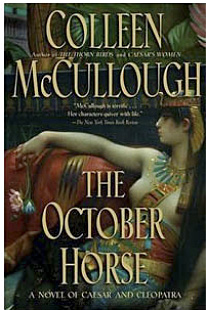
6. The October Horse. 2002. Simon and Schuster. Historic novel. This 792-page tome is the sixth installment of the Masters of Rome series of historic novels by Australian author Colleen McCullough. It spans the turbulent years of Roman history from 48 B.C. to 41 B.C. Beginning with Julius Caesar’s campaign in Egypt and his romantic and political relationship with Cleopatra VII, Pharaoh of Egypt, the book proceeds with Caesar’s war against the Republicans in Africa, led by the indomitable Marcus Porcius Cato, Metellus Pius Scipio, King Juba of Numidia, and Titus Labienus. In Spain and on the high seas, the Republicans are led by Pompey Magnus’ sons, the maritime admirals, Gnaeus Pompey Jr. and Sextus Pompey. The book proceeds with the victories of Julius Caesar and his establishment of a virtual tyranny in Rome as dictator perpetuus, which ultimately ends with his assassination on the Ides of March in 44 B.C.
The idolatry of Julius Caesar by the author continues in this book, as she lavishes praise over her idol, his untarnished dignitas, his unbounded auctoritas, his perfect physique, his brilliant brain, etc., to the detriment of the book, and the entire Masters of Rome series, which has otherwise been well researched and dramatized.
In fact, her prejudices, historical bias, and her infatuation with Julius Caesar in the last three volumes — which surpasses by far that which she incurred with Gaius Marius, the hero of her first two books — have become even more serious, detracting more and more from her narrative and, regretfully, from her historical accuracy. The distortion of the conduct and true character of many of the opposing historic figures, usually the political enemies of her heroes, as I have outlined, is particularly disturbing. The student of history should therefore read additional non-fictional sources to clarify facts and personalities, and correct misconceptions that may have inadvertently crept in from depending solely on this author for accurate historical characterization.
In conclusion, this tome can only be recommended with the same caveats I have more or less delineated for each of the previous books in this Masters of Rome series or as entertaining reading. Read Dr. Miguel Faria’s complete book review entitled “The October Horse — Civil War in Ancient Rome and the Death Knell of the Republic!”
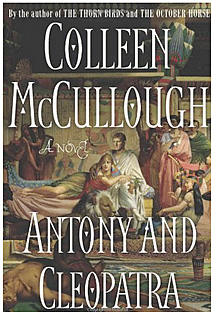
7. Antony and Cleopatra. 2007. Simon and Schuster. Historic novel. This is the seventh and final book in the Masters of Rome series of historic novels by Australian author Colleen McCullough. This tome covers the years 41-27 B.C. of the late Roman Republic. At 567 pages, it is shorter than the previous books in the series. Gaius Octavian, now calling himself Caesar Octavianus divi filius, contends with his fellow Triumvir, Marcus Antonius, and Antony’s lover, Cleopatra VII, Queen of Egypt.
In all of her books of this series McCullough’s characters speak in a modern tone (which at times becomes needlessly vulgar). Characteristically, she makes no attempt to have speakers sound Shakespearean or archaic, but in this last tome, she is a bit more chatty, uses more dialogues, and is generally less informative of other historical events taking place contemporaneously. We are basically in tune, almost exclusively, with the fewer main characters left standing following Rome’s civil wars, battles, and proscriptions.
Events covered in this tome include: events following the defeat and dramatic suicides of Marcus Junius Brutus and Gaius Cassius Longinus after the Battle of Philippi in 42 B.C.; the ensuing rivalry of Mark Antony and Octavian; the control of the seas and depredations of Sextus Pompey on Roman grain shipments; the land and maritime victories of Octavian’s alter ego, Marcus Vipsanius Agrippa; the naval defeat of Sextus Pompey, Pompey’s youngest son, and his death, the last of the great Republicans; Mark Antony’s misadventures in the East and his debacle expedition against the Parthians; Antony’s emotional deterioration and dependence on Cleopatra for money, supplies, and moral support; Octavian’s pragmatic and ruthless political partnership with his ambitious wife, Livia Drusilla; Antony’s divorce of the revered Octavia and the reading of his “treasonous” will by Octavian in the Roman Senate; the downfall of the Second Triumvirate and war in 33 B.C.; the shameful but decisive defeat of Antony and Cleopatra at the Battle of Actium in 31 BC; the invasion of Egypt by Octavian in 30 B.C. with the defeat and suicide of Antony; the conquest of Alexandria, and capture of Cleopatra, who also commits suicide; and the complete victory of Octavian, who in 27 B.C. is honored with the title “Augustus” by the Roman Senate.
Read Dr. Miguel Faria’s complete book review entitled “Antony and Cleopatra — The Battle of Actium and the End of Hellenistic Egypt.”
D. Spy Thrillers:
1. Tinker, Taylor, Soldier, Spy by John Le Carre. 1974. The Franklin Library edition.
2. Smiley’s People by John Le Carre. 1979. The Franklin Library edition.
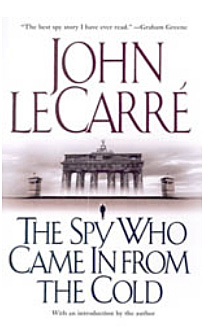
3. The Spy Who Came in From the Cold by John Le Carre. 1964. Coward-McCann Publishers. This novel was also brilliantly adapted into a movie starring Sir Richard Burton, Claire Bloom, and Osker Werner.
Le Carre is a great writer, though at times difficult to read. I enjoyed the books and the movie adaptations of his intriguing novels, but I would be remiss if I didn’t point out that he seems to apply a disturbing moral relativism between the free world of the West and the evil tyrannical communism of the East, as if the political philosophies of East and West were equal. Also, Le Carre tries to portray the novel’s agents on both sides as if they played by the same rules; they did not. In reality, the KGB was almost always the agreesor and MI6 and the CIA played a mostly defensive game. Moreover, except the character of Geoge Smilley, whom Le Carre treats decently both as a professional and a human being, all of the MI6 spies and spy masters seem to be flawed individuals who cared nothing for the ideal of freedom that should be motivating them. One wonders why these individuals would be risking their lives with relatively little pay and little recognition, if they were as flawed as Le Carre portrays them in his novels.
VIII. World History:
A. Multi-tomes General History & Antiquity:
1. The Story of Civilization by Will Durant. This 12-volume set includes the following tomes: Volume 1: Our Oriental Heritage, 1935; Volume 2: The Life of Greece, 1939; Volume 3: Caesar and Christ, 1944; Volume 4: The Age of Faith, 1950; Volume 5: The Renaissance, 1953; Volume 6: The Reformation, 1957; Volume 7: The Age of Reason Begins, 1961; Volume 8: The Age of Louis XIV, 1963; Volume 9: The Age of Voltaire, 1965; Volume 10: Rousseau and Revolution, 1967; Volume 11: The Age of Napoleon, 1975. Volume 12: The Lessons of History, 1968. And, beginning with the 7th volume in this series, the name of Ariel Durant (i.e., Will Durant’s wife) is added as an author on each of the subsequent volumes. This is an exquisite narrative, a marvelous rendition of the story of civilization. The reader may not always agree with the lessons Will Durant derives from his well-researched historical facts, but his wit and flair for writing and his style are indisputable, those of a master craftsman and storyteller! This man’s immense knowledge of history has resulted in a distillation of wisdom that exudes from the pages of each of his volumes in this monumental history of civilization. We cannot help but be enlightened after perusing each and every volume of this spectacular set!
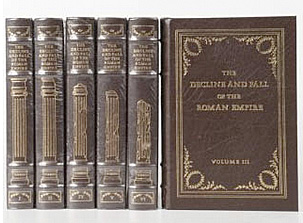
2. The Decline and Fall of the Roman Empire by Edward Gibbon. 1946. Easton Press edition, 1974. Gibbon’s magnificent work is divided into six volumes in this collection. It is no wonder that most learned persons have heard of the name of Edward Gibbon or at the very least the name of his magnum opus, The Decline and Fall of the Roman Empire. At the time of the publication of this work, the Europeans were enthralled with this historical thriller. I believe the same thing would occur if the modern reader would only pause from his busy existence to read this magnificent, historical saga. It seems that many academics have commented on Gibbon’s alleged criticism of Christianity as the culprit for the fall of the Roman Empire. After reading these volumes twice, I cannot say that I agree with this assessment. While Christianity did have a softening influence on the military mind of the Romans, there were myriads of reasons for the fall of the Empire. Perhaps the only valid criticism of Gibbon’s work is the fact that he did not recognize the importance of the Eastern Roman Empire, the Byzantine Empire, as a bulwark against the Eastern barbarians, from the Goths and Bulgars to the more recent newcomers, the Islamic hordes from Mecca, Medina, and the Arabian desert inspired by the prophet Mohammed. More attention should be given to Gibbon’s admonition that civilization is only a generation away from barbarism, and that there is no guarantee that Western civilization could survive a renewed, resurgent savagery from the East.
3. A History of the English Speaking People by Sir Winston S. Churchill. 1956. Dorset Press edition. This collection is divided into four volumes entitled: Volume 1: The Birth of Britain; Volume 2: The New World; Volume 3: The Age of Revolution; Volume 4: The Great Democracies. This is a marvelous compilation of the contribution of the Anglo-American peoples to civilization. Needless to say, Churchill’s personality reverberates in these pages with his wit, aphorisms, sometimes with humor, always with the historical knowledge and wisdom of a giant statesman.
B. General History — Specialized single tomes:
4. Soldiers of Fortune: The Story of the Mamlukes, 1250-1517 by Sir John Bagot Glubb. 1973. I list this book here not only because it is an historic masterpiece, but also because this book fills a huge gap of knowledge in world history. See Dr. Miguel Faria’s review of this book on this website.

5. The World of Herodotus by Aubrey De Sélincourt. 1962. Little, Brown and Company. This is an excellent book. Aubrey de Selincourt, was a scholarly Englishman, the translator of the Penguin editions of both Herodotus and Livy, the master historians of ancient Greece and Rome, respectively. My copy is a 1962 first edition of the book published by Little, Brown and Co. The front cover of the dust jacket is black near the spine and then light blue on the rest of the cover. It has a picture of the famous trademark silver coin of the famous owl of Athena symbolizing wisdom and repeatedly coined in ancient Athens, a center of commerce as well as intellectual life in the fifth century B.C..
Aubrey de Selincourt was not only a master translator of ancient Greek and Latin, but a connoisseur of classical ancient cultures. His World of Herodotus does not only encompass geographical Greece, but also Persia, Egypt, and Asia Minor. For example, we learn about Solon of Athens, King Croessus of Lydia, Cyrus the Great of Persia, etc. We also learn about the intellectual climate, philosophy, the mores, the literature, and the arts of the times, as well as wars and clashes of civilization. In the process, we also learn that Herodotus was not the naive and gullible storyteller historian we have been led to believe, but an erudite scholar and premier historian who earned and deserves the title of Father of History. When possible, Herodotus pursued witnesses for his sources of information, but he also winked at us, when he related some of his more fantastic tales. Herodotus savored life and learning, as does his narrator de Selincourt. Herodotus described Persian civilization not with the contempt and condescension of a Greek enemy, but, surprisingly, with sympathy, humanity, and even admiration. Beginning with Greece and then Persia, De Selincourt follows Herodotus down the path of history, war, and contention, leading to the epic and climactic clash of Greek and Persian civilizations.
This is a superb and enthralling volume, and I fully agree with another reviewer, who with insight wrote, “[this book] puts to shame most histories written now, which tend to be either condescending or chillingly post-modern (often both). It’s refreshing to read a historian who loves his subject and isn’t afraid to enthusiastically share his love with his readers.” Indeed, this is the book to read, if one really wants to avoid modern cliches and instead desires to be dazzled and immersed in the classical zeitgeist of the time, as marveously recounted by the Father of History and explained by a master writer, translator, and premier classical scholar.
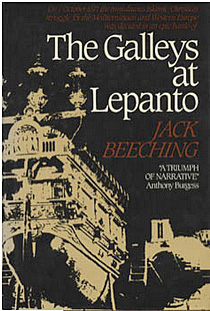
6. The Galleys at Lepanto by John Beeching. 1982. This marvelous book is so well researched and mellifluously narrated that it reads almost like a fairy tale or an epic romance of yore, elegantly scribed in poetic prose. Foremost among the knights-errant in this tale of chivalry is Don John of Austria, illegitimate son of Holy Roman Emperor Charles V and half-brother of the stern King Philip II of Spain. The characters come to life as they are vividly described in the enthralling narrative, thus once begun, the tome is very difficult to put down. Intrigue, perils, and tales of heroism galore at Rhodes, Malta, and Cyprus await the reader before the denouement at the naval battle of Lepanto in 1571. See Dr. Miguel Faria’s review of this book on this website.
7. Suleiman the Magnificent: Scourge of Heaven by Antony Bridge. 1966. This book is an engaging, but not exhaustive, narrative of the major events in the life and times of the great Ottoman Sultan Suleiman (r. 1520-1566) that reads like a charming storybook. See Dr. Miguel Faria’s review of this book on this website.
8. Triumph: The Power and the Glory of the Catholic Church, a 2000-Year History by H.W. Crocker III. 2001. This magnificent book is not only for Catholics but also for anyone interested in nothing less than the history of (and the developments of theological, political and philosophic ideas in) Western civilization.
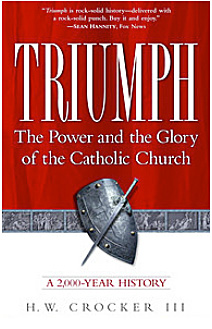
Another issue discussed is the Protestant dictum that everyone is basically his own priest by reading and interpreting the Bible for oneself versus the Catholic dogma that the Church is the ultimate authority. And the issue of salvation by “faith alone” versus “faith and good works” is also discussed. This section was of personal interest as it awoke an old memory: Brought up as a Presbyterian, even attending Presbyterian schools in Cuba (which were later “nationalized” by the Revolution and forced to become secular), I remember, as an 8-year-old, returning home from school and telling my mother that I did not have to do “good works” unless I wanted to, because I had faith, and with my academic record and early school accolades, I already knew I was one of the elect! This book clarifies and helps correct many misguided, preconceived notions!
Among the many topics related to theology itself, the book discusses and unravels such theological conundrums as the ramifications of the literal interpretation of the Bible, personal reading and interpretation of the Bible, predestination versus free will, where Calvinists have made errors (already solved by Catholic theologians and Councils of the Church), that have been successfully exploited by the secular humanists.
I highly recommend Triumph: The Power and the Glory of the Catholic Church as an accurate history of the Catholic Church closely interwoven with the story of Western civilization, traditions, natural law, and the essence of conservative philosophy.
9. Napoleon’s Family: The Notorious Bonapartes and Their Ascent to the Thrones of Europe by Desmond Seward. 1986. After reading this book, one wonders how Napoleon ever found the time to fight so many battles and conquer most of continental Europe while, at the same time, dealing with such a troublesome family — a family that was driven to wealth and power, fomented discord, and even betrayed Napoleon in pursuit of their own selfish interests. The book contains excellent illustrations and photographs of the members of this unenviable family!
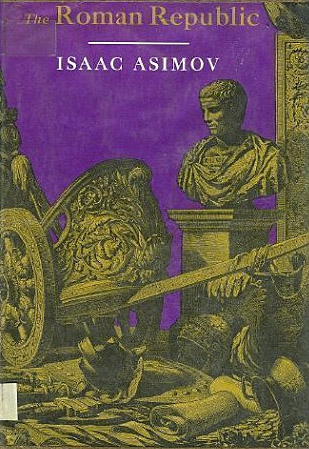
10. The Roman Republic by Isaac Asimov. 1966. This book is a hard-to-find classic and a must-read for understanding the Roman Republic from its beginning. The history is inextricably entwined with myth and legend, but the valor of the Republican Romans is unquestioned. The easy-to-read book will hook the reader into further exploring the Republic; its foundation; accomplishments in law; feats of architecture, including the building of the magnificent aqueducts, the Roman arch, vaults and domes; roads, which remain to the present day; not to mention the importance that Roman citizens gave to their civic duties, freedoms, and responsibilities. But more than that, the reader will be thrilled to read about the advance of Western civilization that was blazed by the Roman legions in a world surrounded by barbarian tribes.
C. JFK Assassination:
1. The JFK Assassination Diary: My Search For Answers to the Mystery of the Century by Edward Jay Epstein. 2013. See Dr. Miguel Faria’s review of this book on this website.
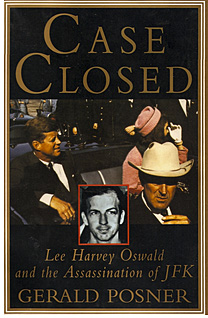
2. Case Closed: Lee Harvey Oswald and the Assassination of JFK by Gerald Posner. 1993. “Case Closed finally succeeds where hundreds of other books and investigations have failed — it resolves the greatest murder mystery of our time, the assassination of JFK. Based upon explosive new interviews, secret files and evidence, Case Closed not only closes the gap where the Warren Commission leaves an opening, but also demolishes the leading conspiracy theories, putting to rest once and for all speculation about involvement of the CIA, FBI, and the mafia, and the supposed links between Lee Harvey Oswald and Jack Ruby. Case Closed answers all lingering questions about the assassination and reveals how the latest computer enhancements of the Zapruder film determine the number and precise timing of the shots fired in Dealey Plaza” on November 22, 1963. See Dr. Miguel Faria’s complete book review posted on this website.
3. Legend: The Secret World of Lee Harvey Oswald by Edward Jay Epstein. 1978. Absolutely absorbing reading! Another thrilling gem from indomitable and savvy investigator Edward J. Epstein.
4. Oswald’s Tale, An American Mystery by Norman Mailer. 1995. I am not a fan of Norman Mailer, but I must admit that this is an outstanding volume with engaging narrative and incredible research. This is probably the best book written on Lee Harvey Oswald’s life from the assassin’s perspective. This book presents a sharp contrast to Legend by Edward J. Epstein. Obviously, Mailer’s book was written and published seventeen years later and more information was available to him, not to mention the fact that he was able to enter Russia after the collapse of the Soviet Union, obtain information there, and interview citizens. None of this was available to Mr. Epstein in the 1970s.
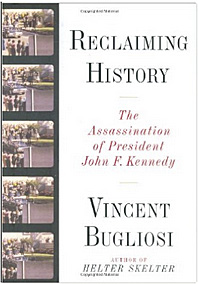
5. Reclaiming History: The Assassination of President John F. Kennedy by Vincent Bugliosi. 2007. If Gerald Posner’s book, Case Closed: Lee Harvey Oswald and the Assassination of JFK (1993) convinced me that Lee Harvey Oswald killed JFK and acted alone, Reclaiming History removed any possible lingering doubts that I may have had, even subconsciously.
With over 1500 pages of text, plus Bibliography, Index, and another 1000 pages of Notes in a supplementary CD, this monumental book is the best researched, most annotated, most scholarly, most analyzed, most comprehensive, and certainly most authoritative book on the JFK assassination.
Read this book. Despite its impressive size and the sheer weight of this very hefty tome, knowledge, logic, and eloquence carries the day in this suspenseful and tantalizing, yet easy, read. And unless you are one of those conspiracy theorists who are immune to logic and reason, you will be convinced that Oswald was indeed the assassin, that he acted alone, and that there was no conspiracy. Get this book and read it and you will also be convinced beyond all doubt! Read Dr. Miguel Faria’s complete book review on this website.
Written and Reviewed by Dr. Miguel Faria
Copyright ©2011-2021 Miguel A. Faria, Jr., M.D.
2 thoughts on “Great Books”
Great Books: I’m reading about the rise of Caesar and the fall of the Roman Republic — fascinating.— Gary Mauser, PhD is professor emeritus in the Institute for Canadian Urban Research Studies and the Beedie School of Business, Simon Fraser University, British Columbia. He specializes in criminology and economics, has published extensively on firearms legislation, firearms and violence, and has provided expert testimony on criminal justice issues to the Canadian government. (FB, March 10, 2023)
If you need for me to recommend some books on the roman Republic, I would be happy to oblige, just let me know.—MAF
Thanks. I’m enjoying Christian Meier’s biography of Caesar. I’ve read other books on this topic before but this Meier is thoughtful critical and thought provoking. Rome Republic recapitulated the classic cycle: King, democracy, oligarchy, tyranny. What books would you suggest?— GM
I recommend the original classic tomes by Livy (The History of Rome, tome I), Polybius (The Histories), and Plutarch (Parallel Lives) that are magnificent, and one is surprised that these books are so readable despite they are translations and written around two millennia ago! But I would first recommend, Isaac Asimov’s classic, The Roman Republic, which reads like a fairy tale but is hard to find and expensive, but if you read this little book you would be hooked on the Roman Republic. https://www.amazon.com/Roman-Republic…/dp/0395065763/
Then I would recommend the historic novels by Colleen McCullouch that are incredibly well researched, mostly accurate, and only tainted by her liberal bias, as I recorded in each of her tomes which I have reviewed at my website. She loves Marius and Julius Caesar, but is fair on Marc Antony (The Populares), but she is extremely biased against the the Optimates, Pompeians and later the Republicans — all of which I have discussed in my reviews. Here is the first volume. https://haciendapublishing.com/the-first-man-in-rome-the-apotheosis-of-gaius-marius/?fbclid=IwAR2m4UBV0r805nLvkEXwWq_7Qomrup752SV3J8QrLgzCmsyN-9w4dW0v9D0
Thanks. I’ll read your review. I read her novels years ago and enjoyed them — although they seemed fanciful. I just finished the Robert Harris trilogy on Cicero. That seemed solidly researched.— GM https://i.ebayimg.com/images/g/Ri0AAOSwKE1hKLXj/s-l400.jpg
Is Harris sympathetic towards Cicero? Liberals do not like him, including Colleen McCullouch, who belittles him as much as is historically possible (and some novelistic license), as she does Pompey Strabo and Pompey the Great, Metellus Scipio, and other Optimates. To Sulla she attributes every bad terrific incident that historians ever speculated about and possibly attributed to him. Only to Emilius Scaurus of the conservatives Optimates does she give a fair shake! I don’t like her other novels at all, but the Rome series’ scholarship is otherwise incredibly mesmerizing. But, yes, she adores Julius Caesar, so that her two tomes salivating over him are my least favorite. —MAF
Harris presents Cicero quite favourably. The trilogy is presented as Tiro’s long-lost biography. Harris even treats Cicero’s overwhelming pride sympathetically. After a quick scan, I’d say your review captured McCullouch quite well!—GM
If you would like to review the trilogy for my website, I would welcome considering reviewing them!… I have already ordered all three of the Cicero trilogy! —MAF
Thank you for the invitation, but I’m up to my ancient ears in efforts to counter the Canadian government’s tyrannical policies. The Trudeau Liberals are banning and confiscating the lion’s share of civilian guns and imposing a draconian suppression of free speech. Check out my blog, justiceforgunowners.ca — GM.
I understand. I have done my share here. The whole world is leading toward totalitarianism led by the US, Canada, and the EU in the West with a convenient but horrific adversary in the East, China, now allying itself with Iran and Russia. Obviously the Western elites want us disarmed and subservient as in 1984, so that Eurasia (the East) and Oceania (the West) can be conveniently in perpetual war, keeping their respective populations suppressed and hapless. That is a good reason to escape from time to time to the Classic World of the past to escape the unreality of the reality of the present! —Dr. Miguel Faria
Boris Berezovsky, RIP
Submitted by Dr. Miguel A. Faria on March 23, 2013 – 1:22pm.
Discussed and mentioned under two books discussed here, “Death of a dissident” and “Comrade J,” the BBC has just noted the obituary of a great Russian, the “oligarch” Boris Berezovsky. “Russian tycoon Boris Berezovsky found dead, March 23, 2013, BBC”
“The exiled Russian tycoon Boris Berezovsky has been found dead at his home in Surrey. The circumstances of the death of the 67-year-old – a wanted man in Russia, and an opponent of President Vladimir Putin – are not yet known.
A former Kremlin power-broker whose fortunes declined under Mr Putin, Mr Berezovsky emigrated to the UK in 2000.
Last year, he lost a £3bn ($4.7bn) damages claim against Chelsea Football Club owner Roman Abramovich. Mr Berezovsky claimed he had been intimidated by Mr Abramovich into selling shares in Russian oil giant Sibneft for a ‘fraction of their true worth.'”
“The allegations were completely rejected by the London Commercial Court judge, who called Mr Berozovsky an ‘inherently unreliable’ witness.
“Diminished wealth
“Mr Berezovsky had made his fortune in the 1990s selling imported Mercedes as well as Russian-made cars. Later owning Sibnet and as primary shareholder in Russia’s main television channel, he supported Boris Yeltsin’s rise to power.
“Mr Berezovsky survived numerous assassination attempts, including a bomb that decapitated his chauffeur. During the later years of Yeltsin’s presidency, Mr Berezovsky was part of the leader’s inner circle as deputy secretary of Russia’s security council. He then played a role in Mr Putin’s rise in the late-1990s, before the new president moved to curb the political ambitions of Russia’s oligarchs…”